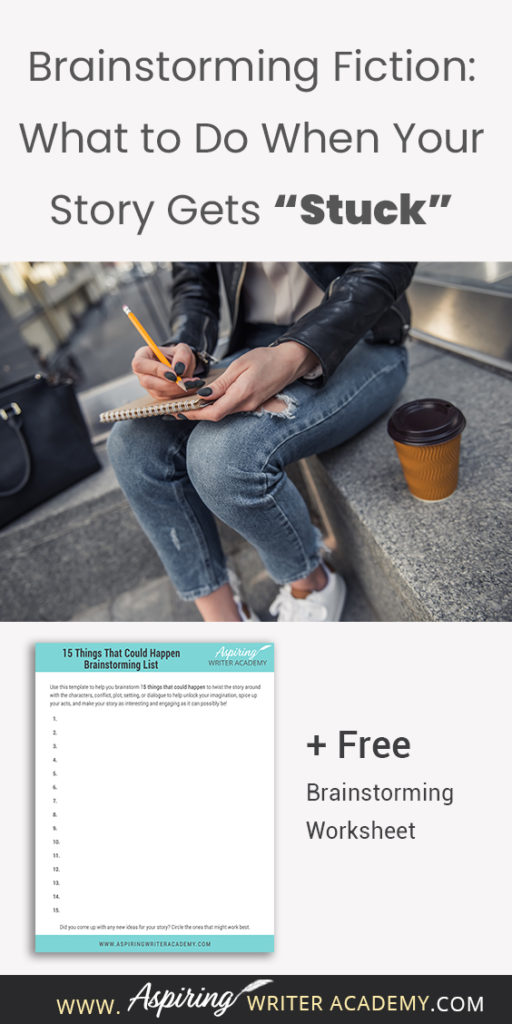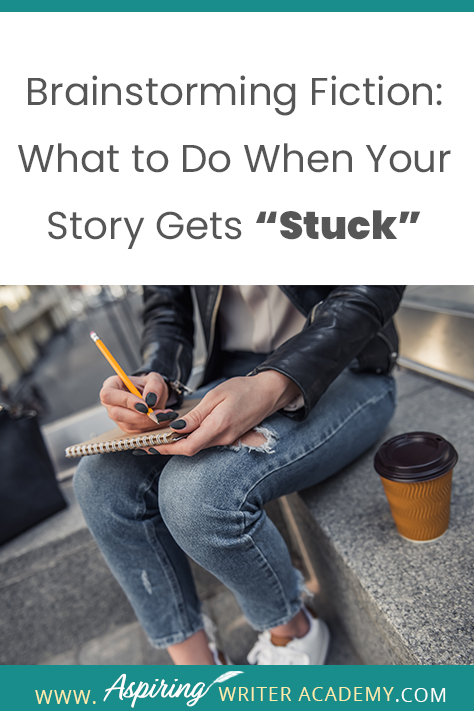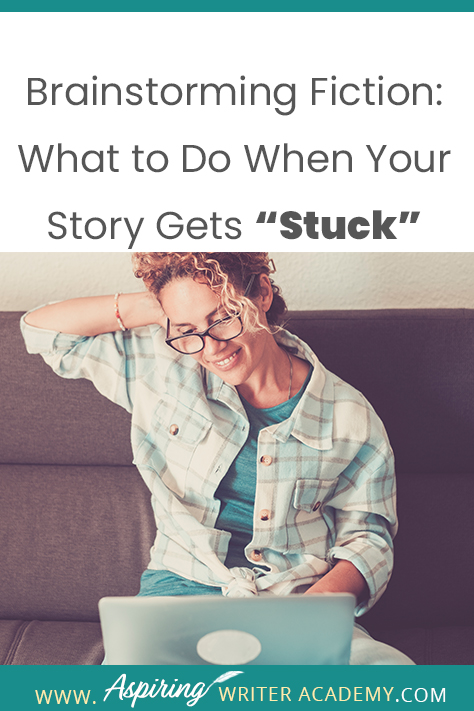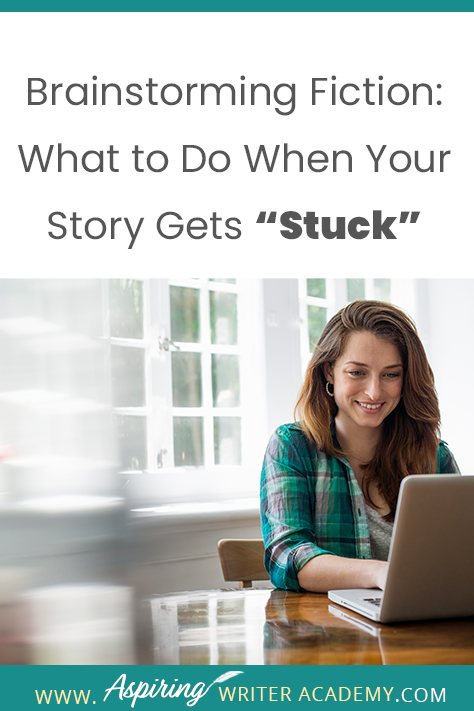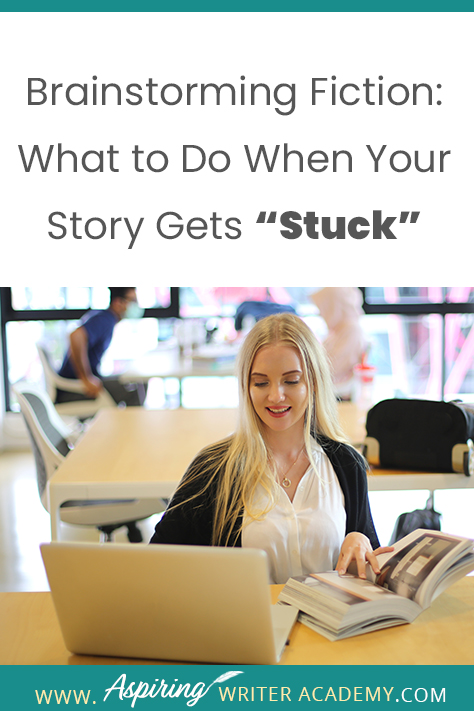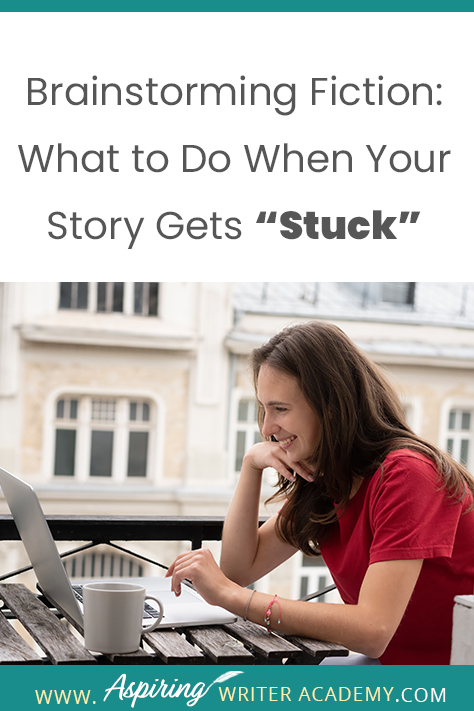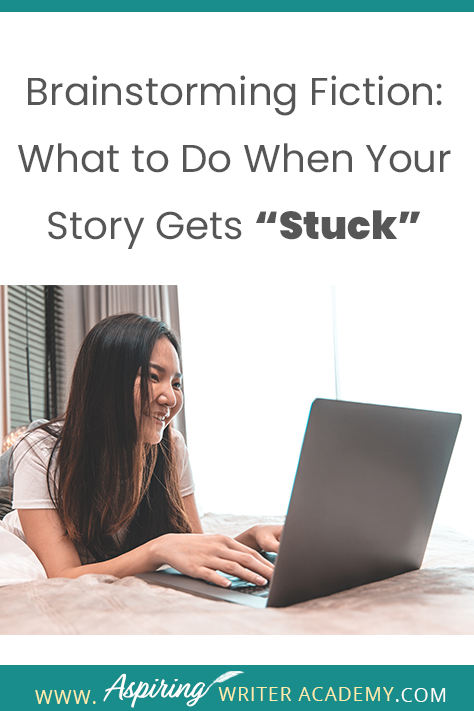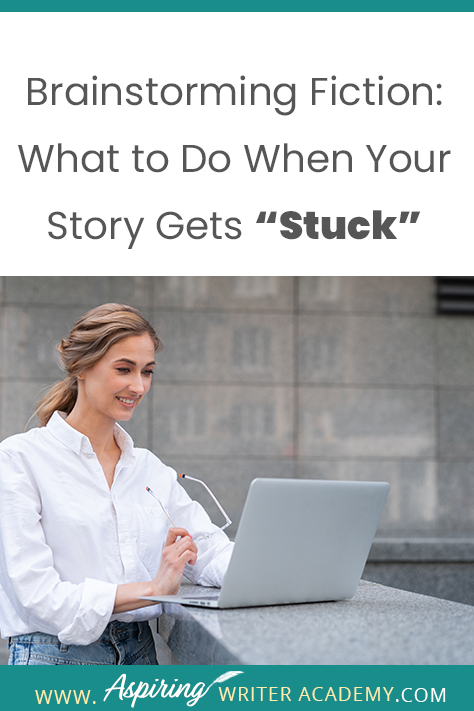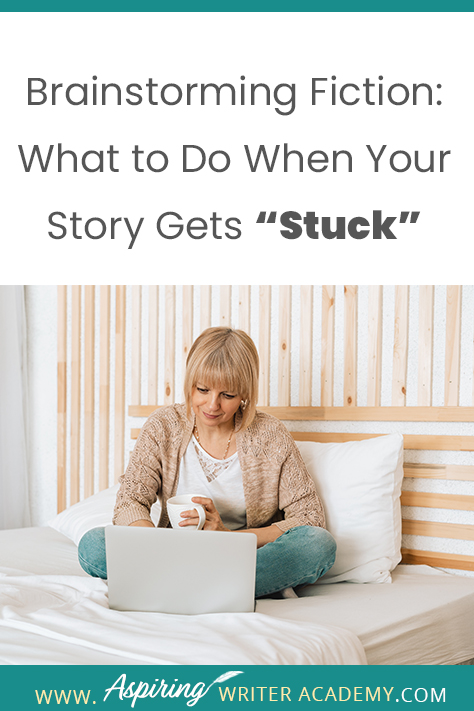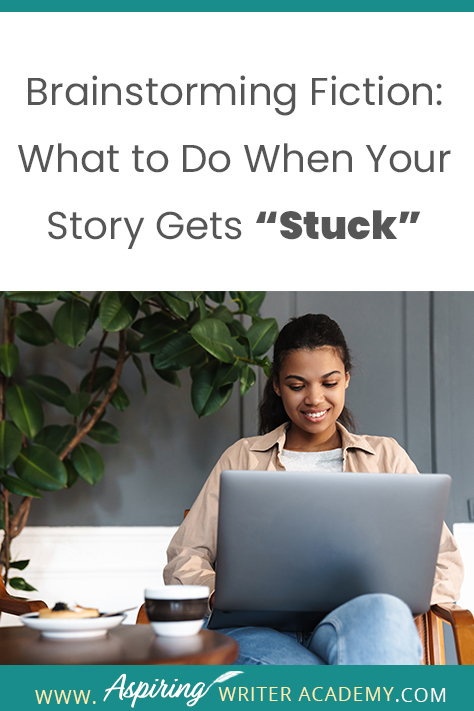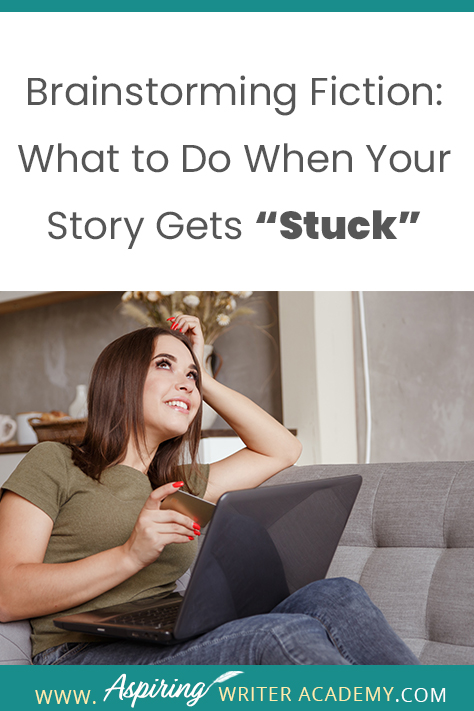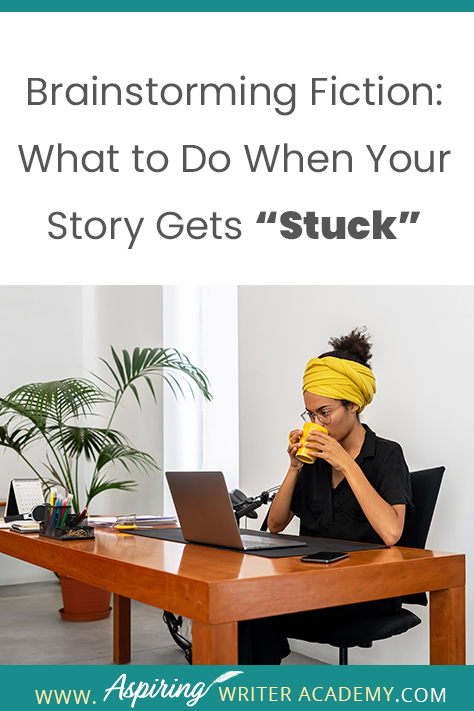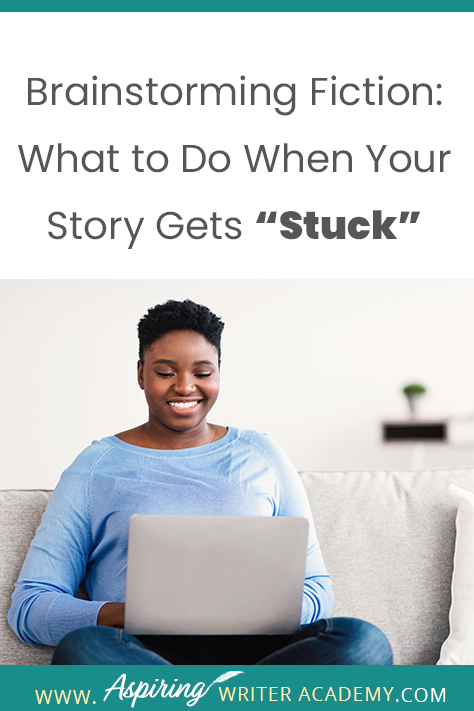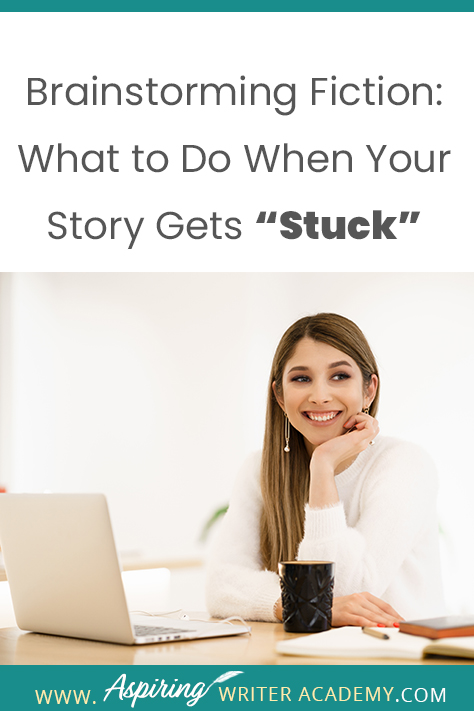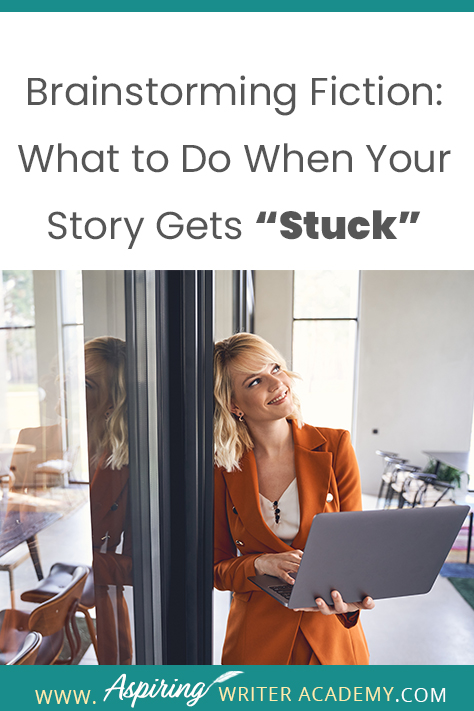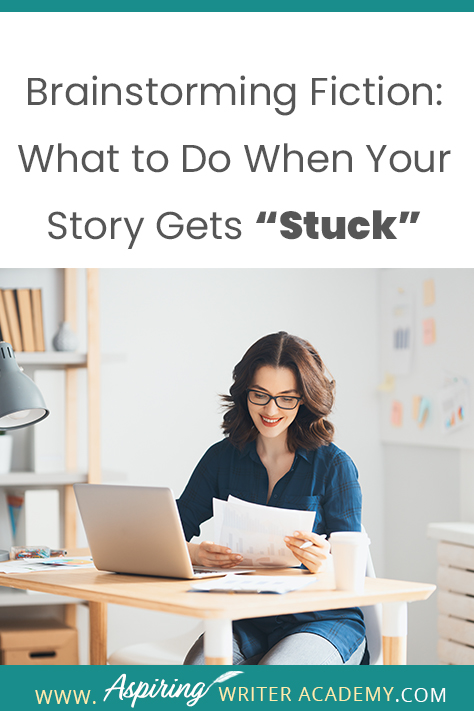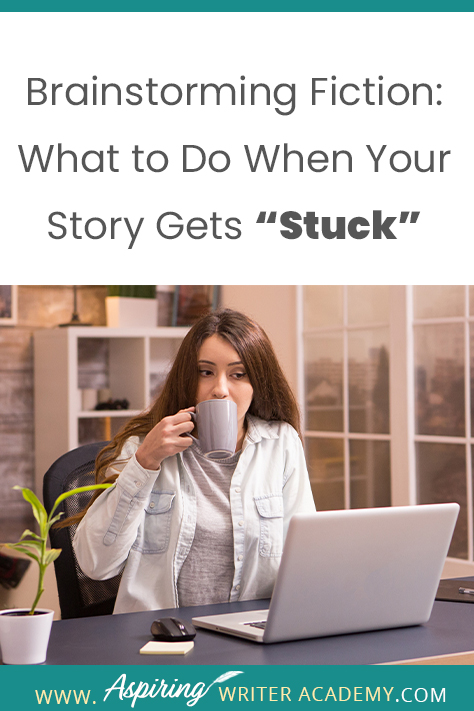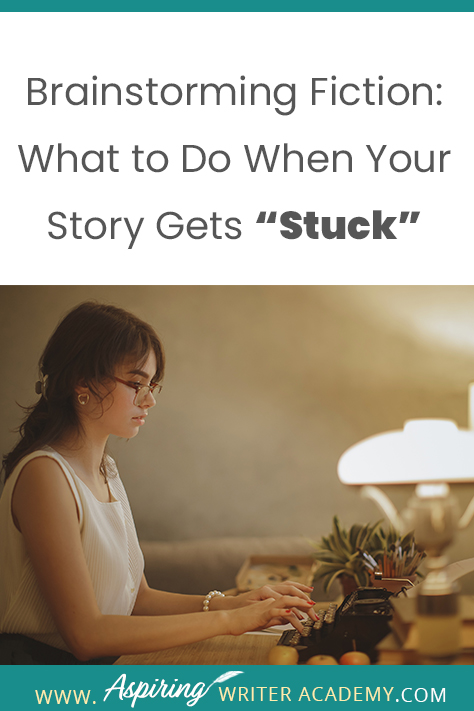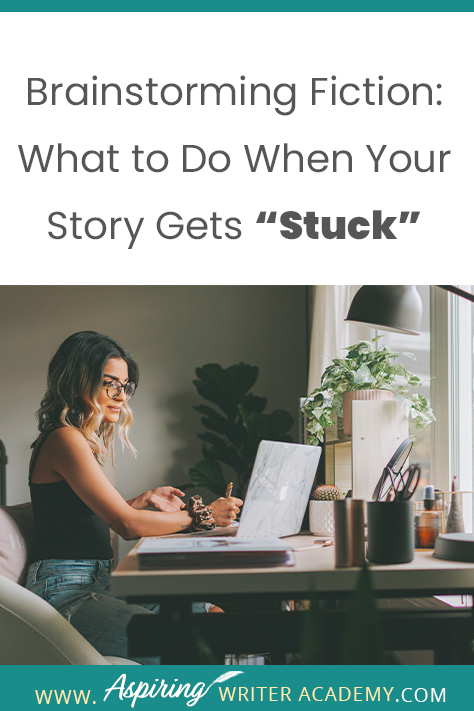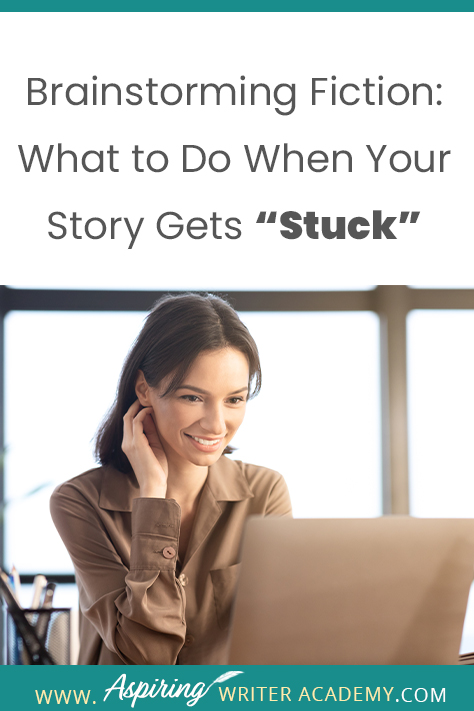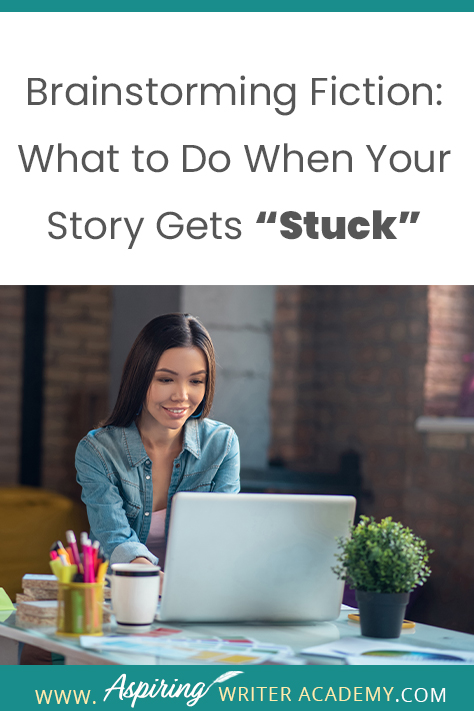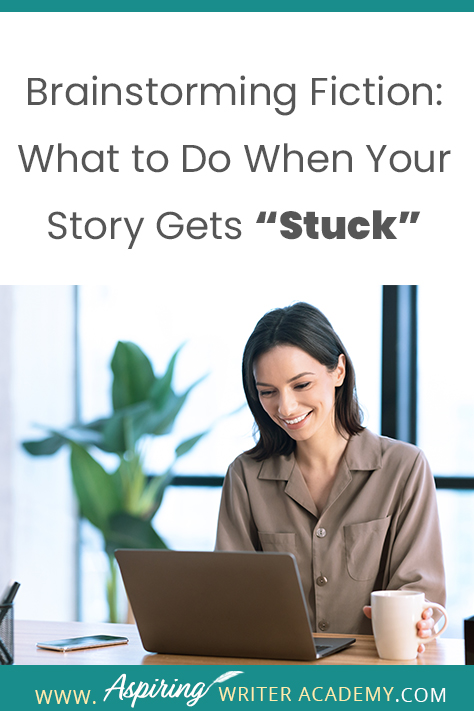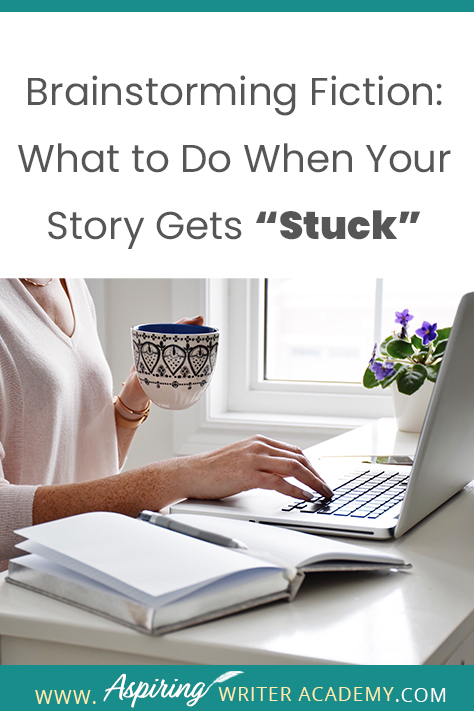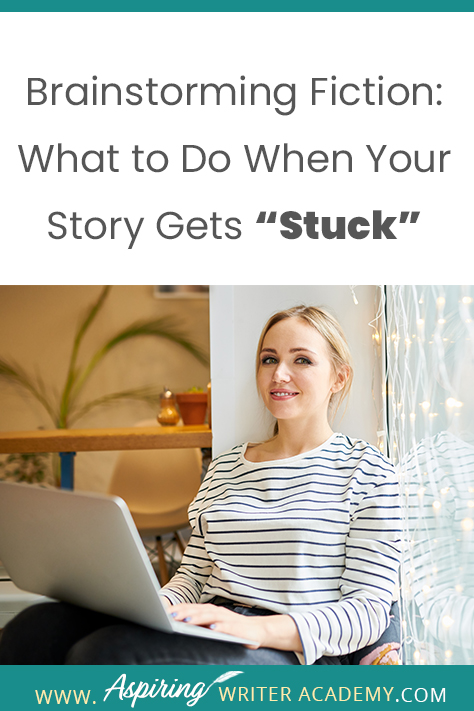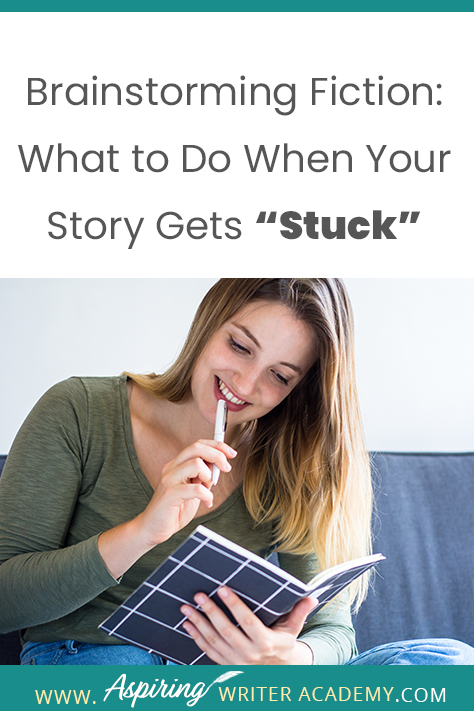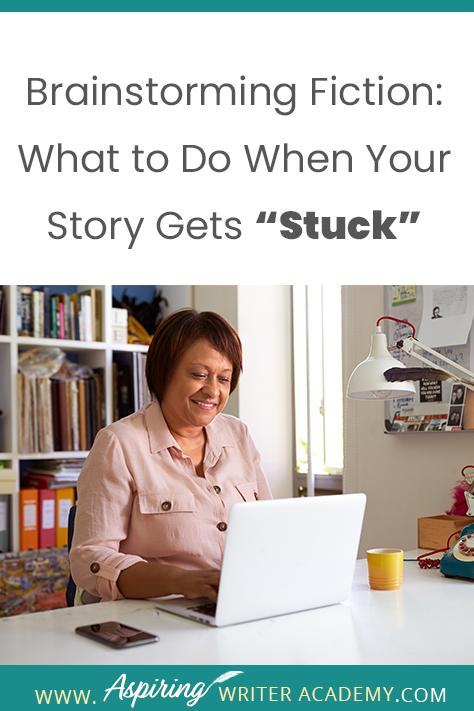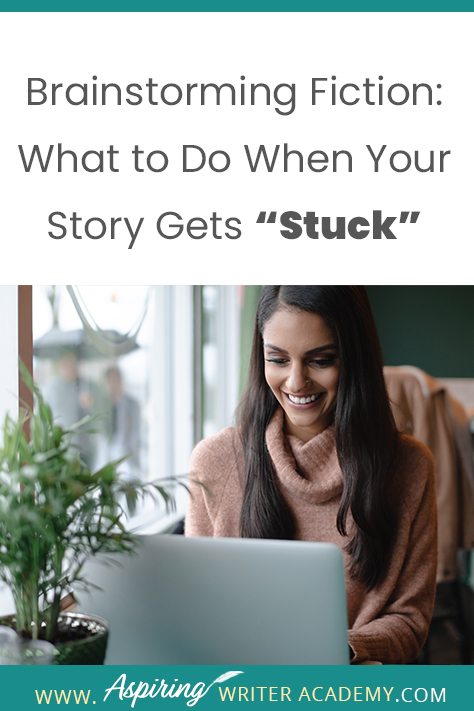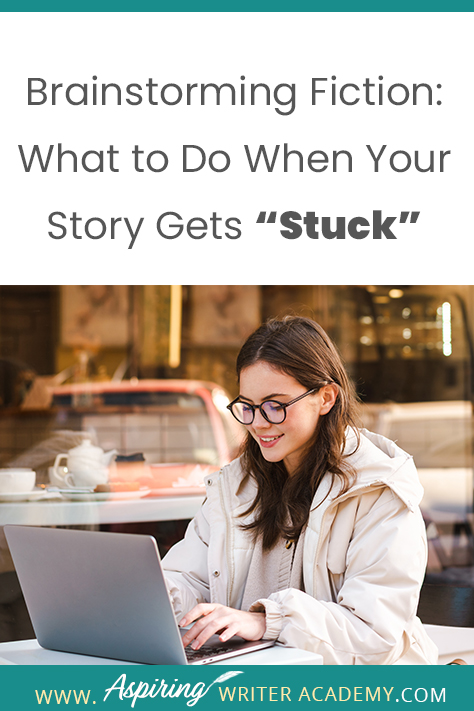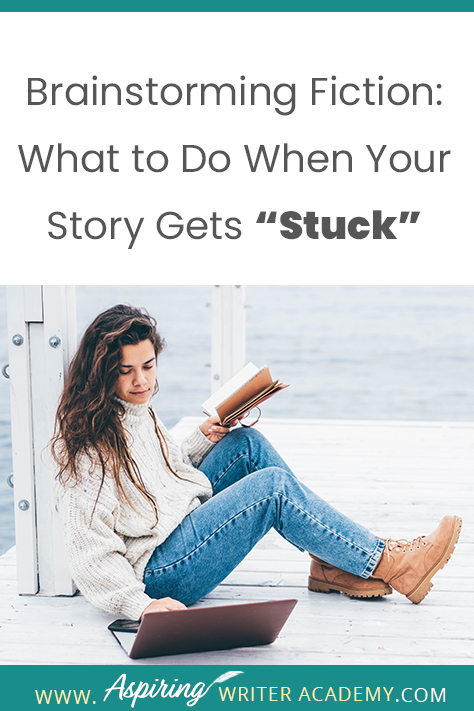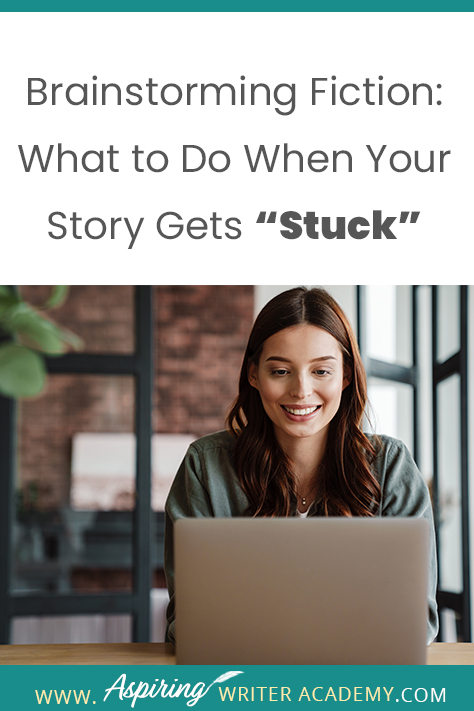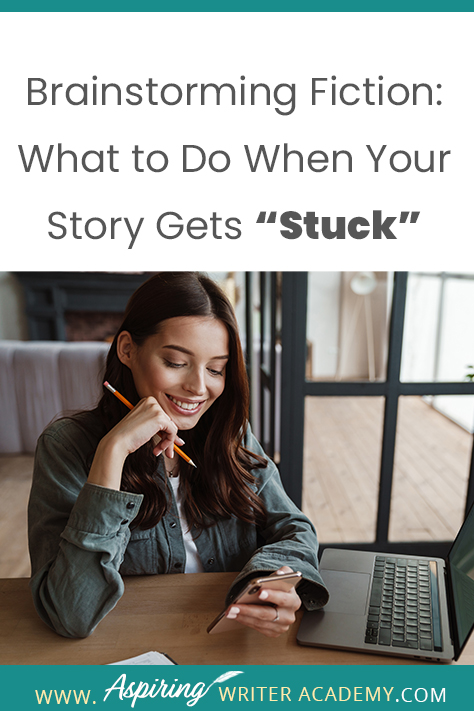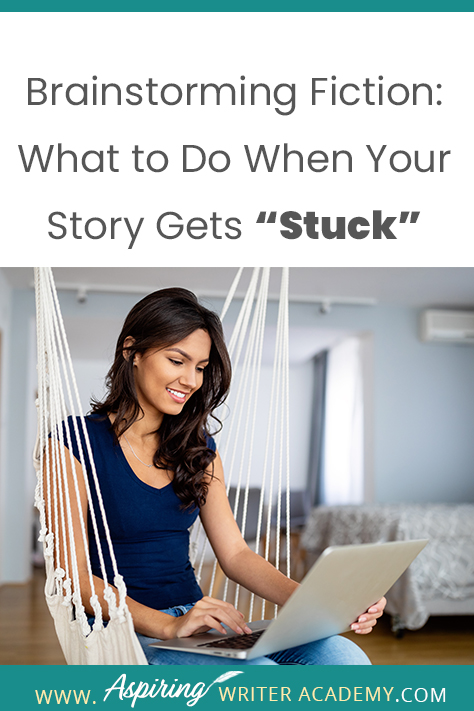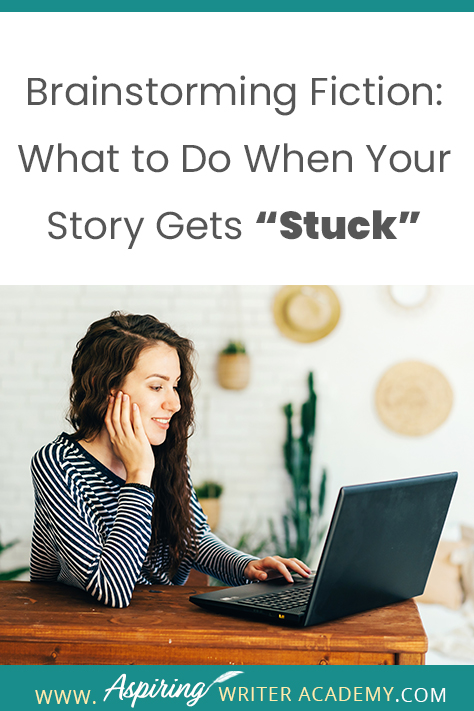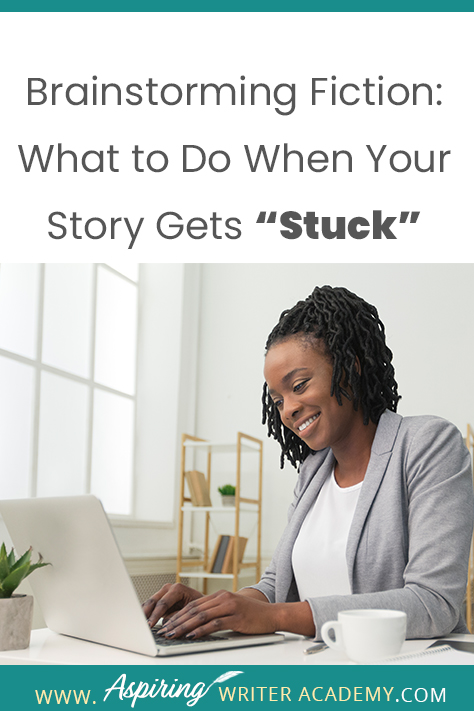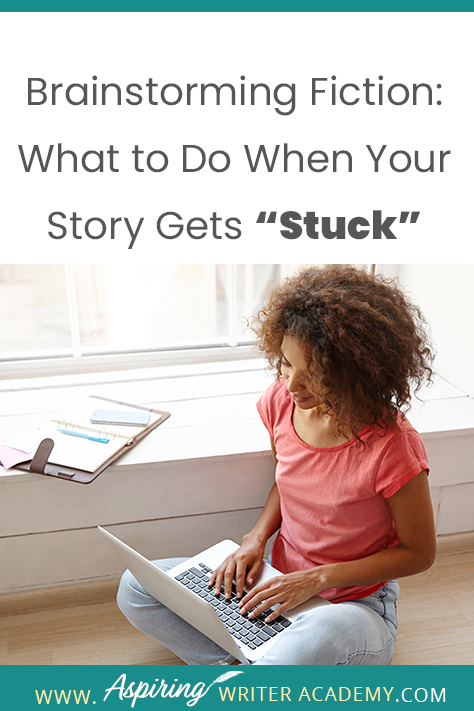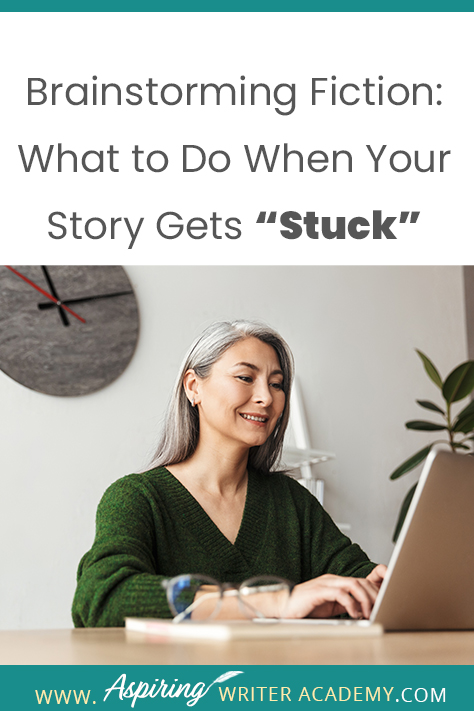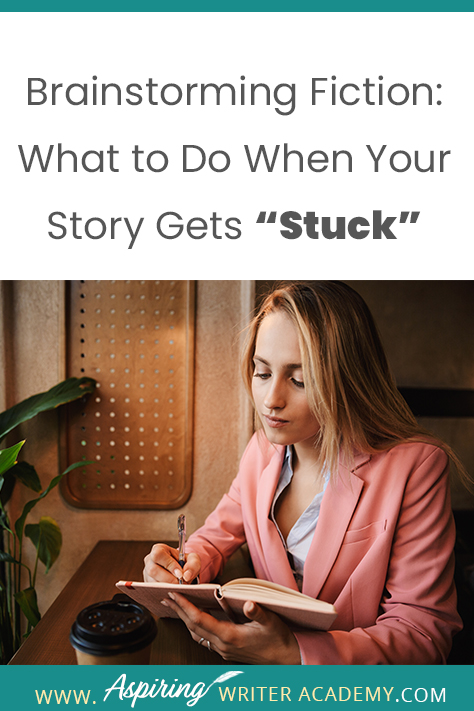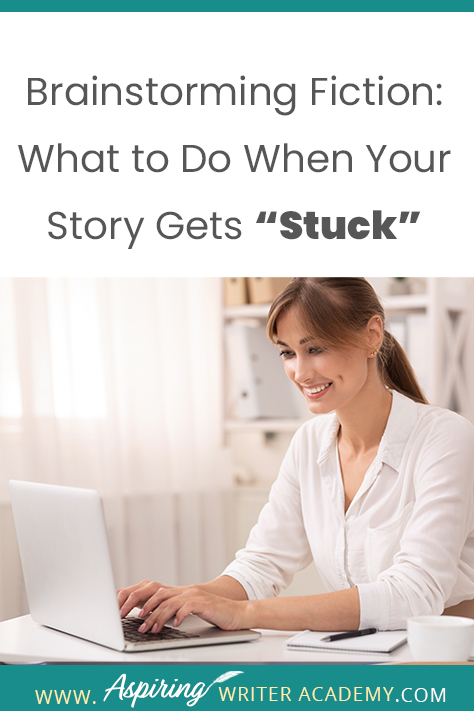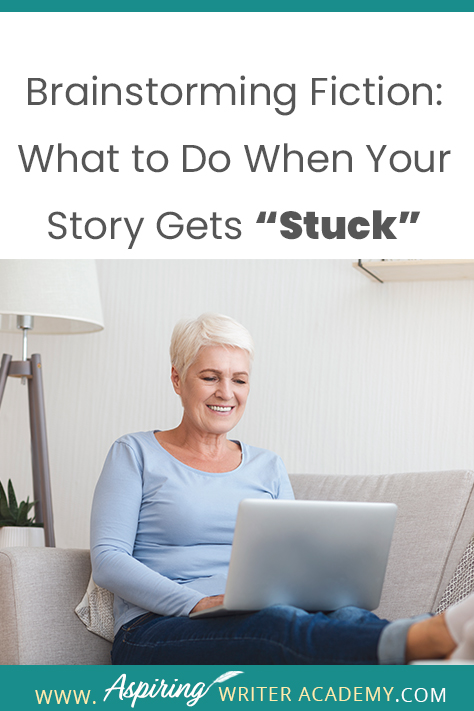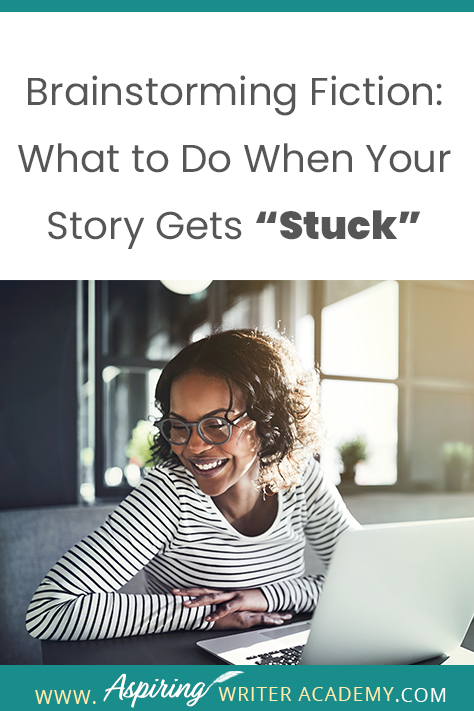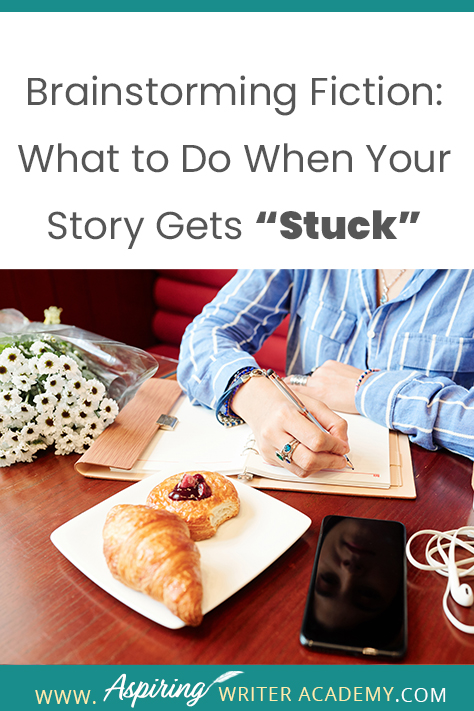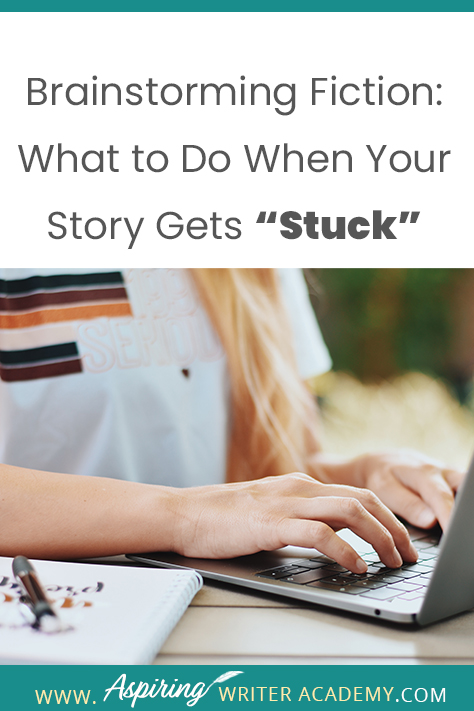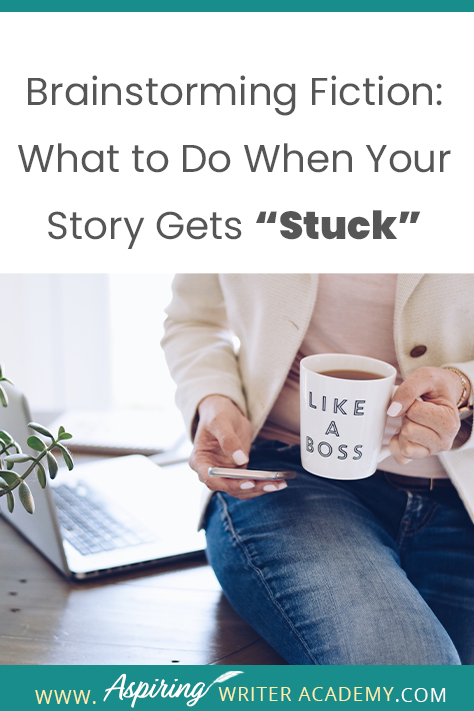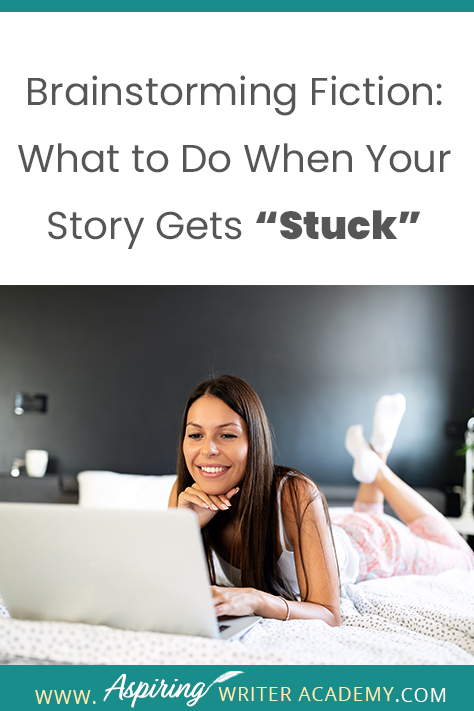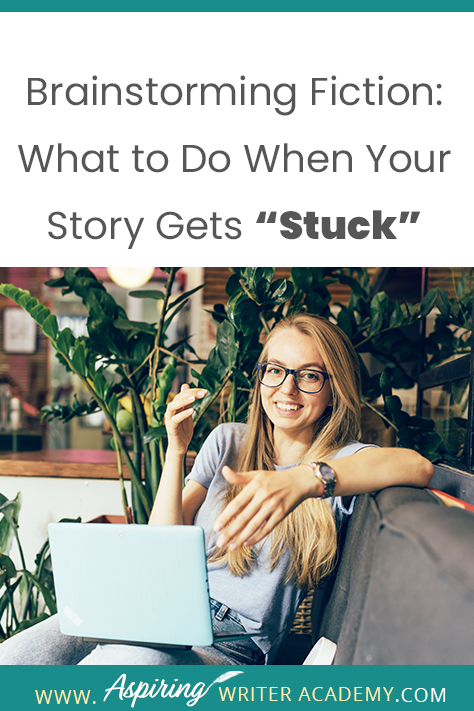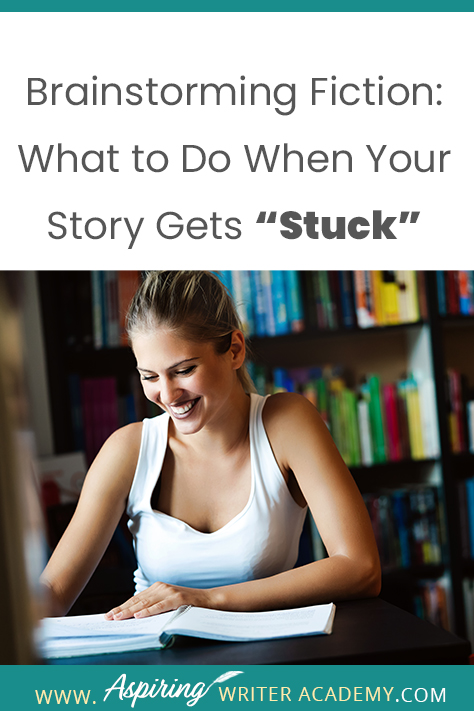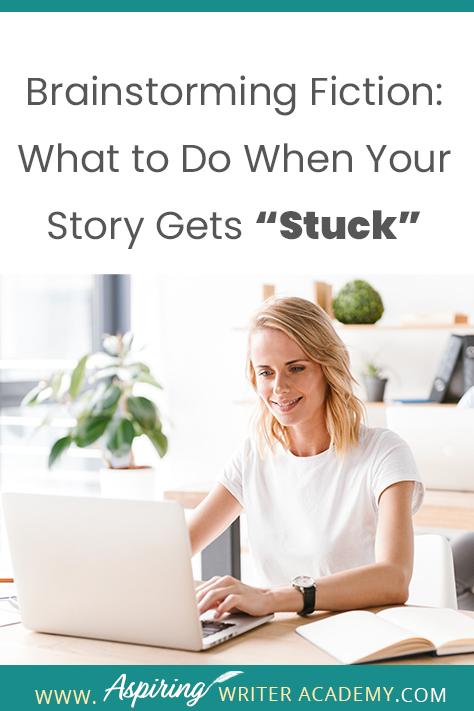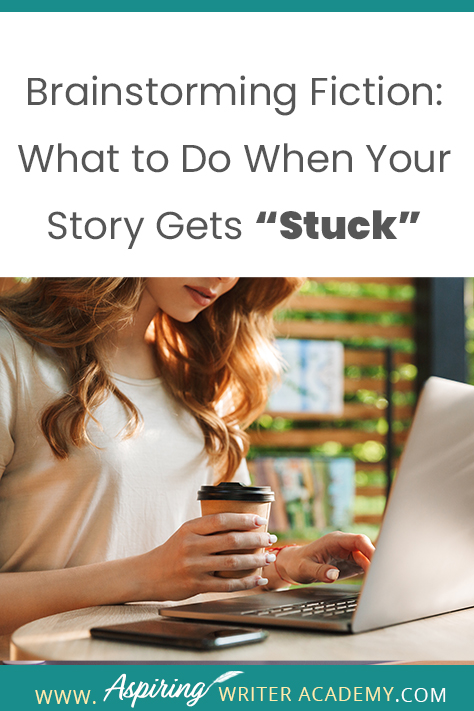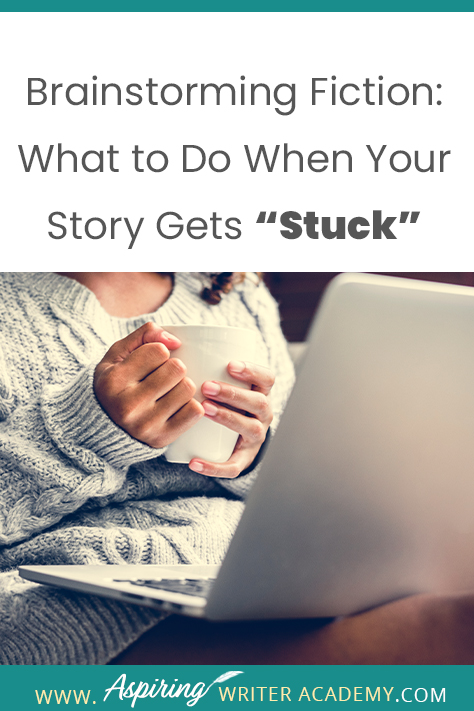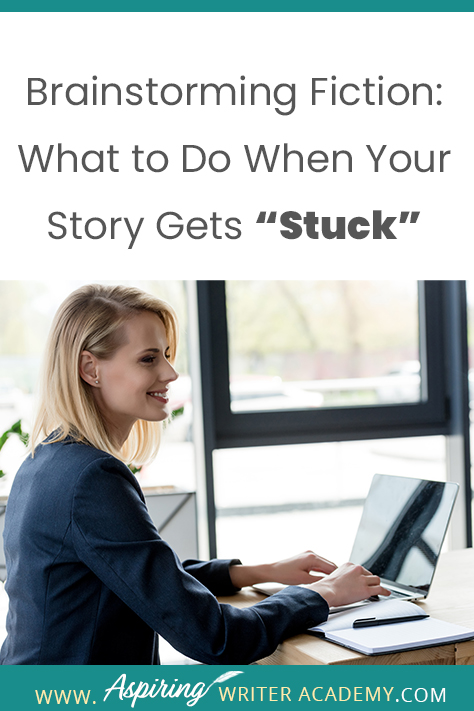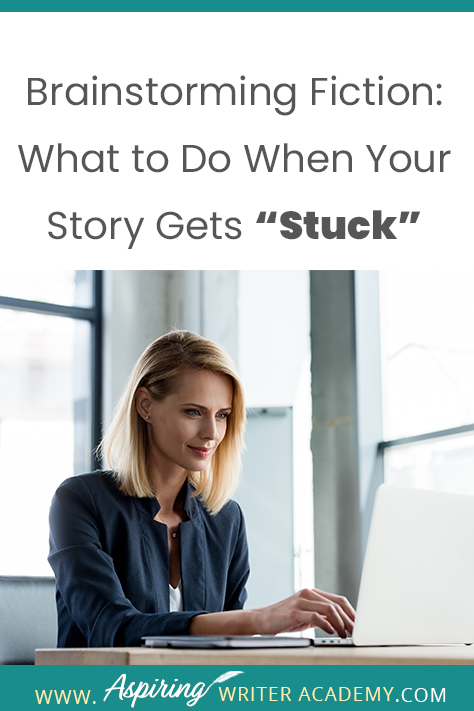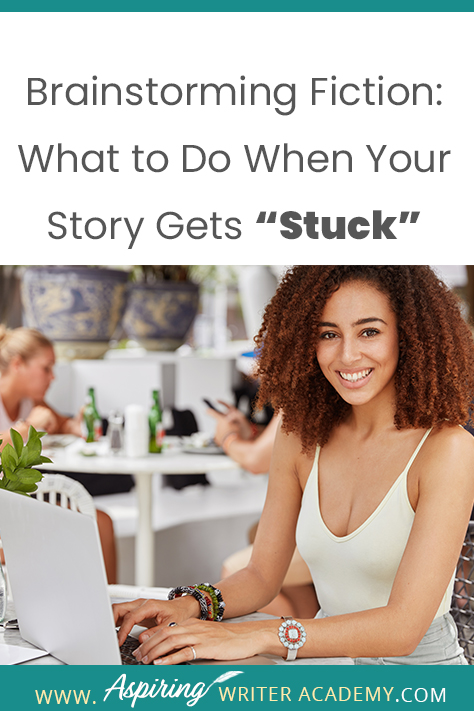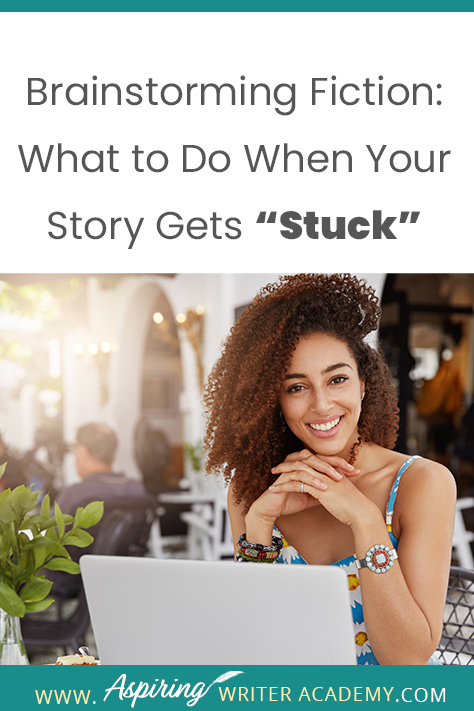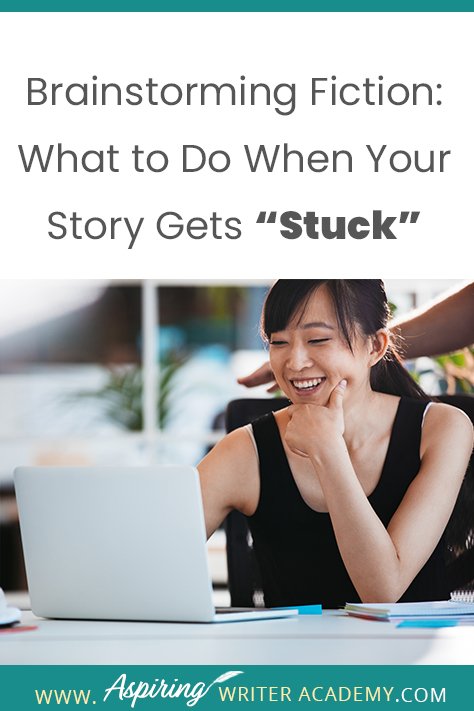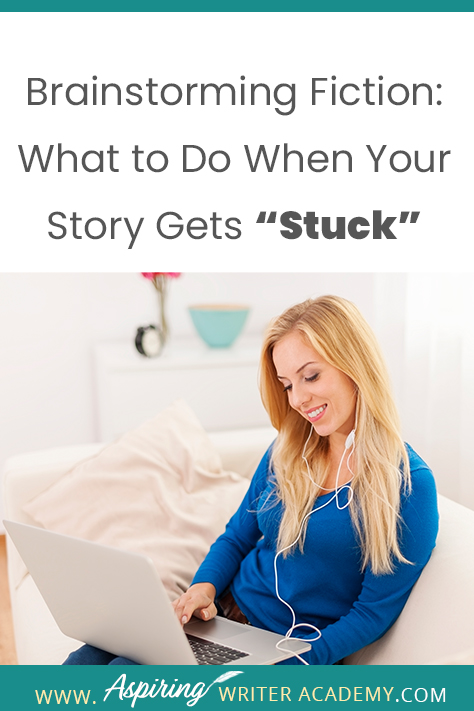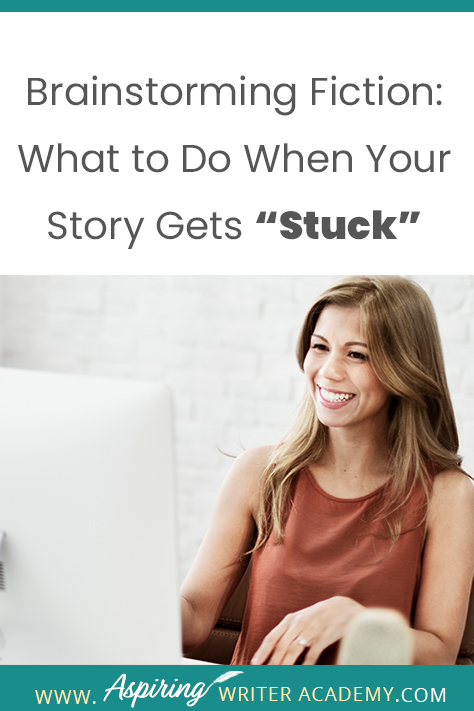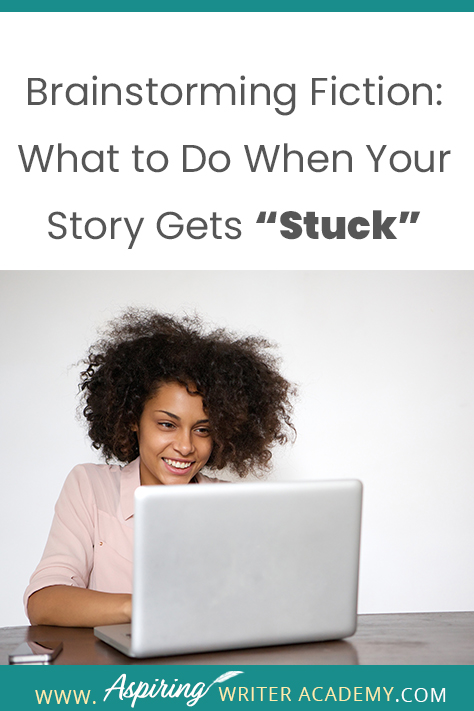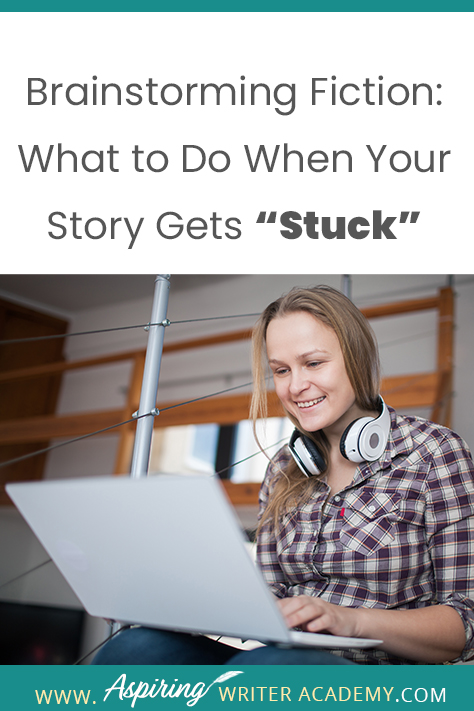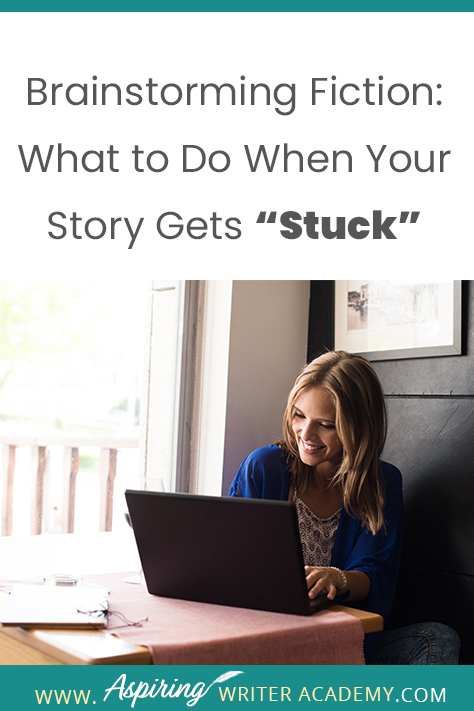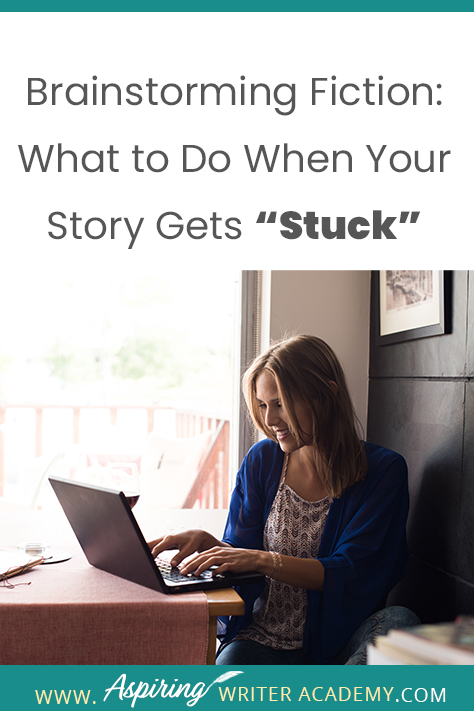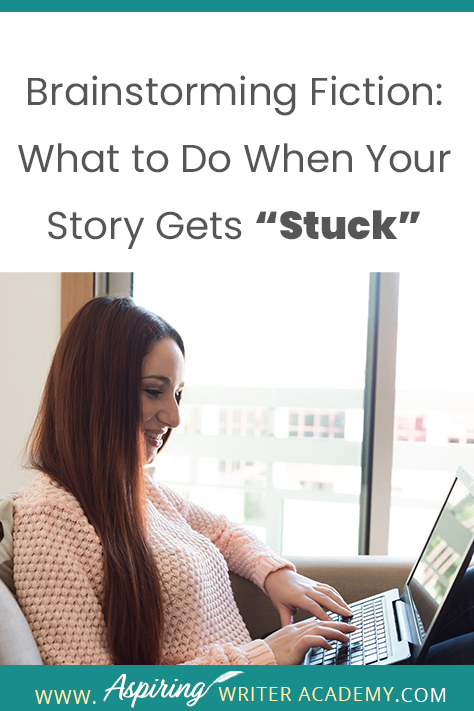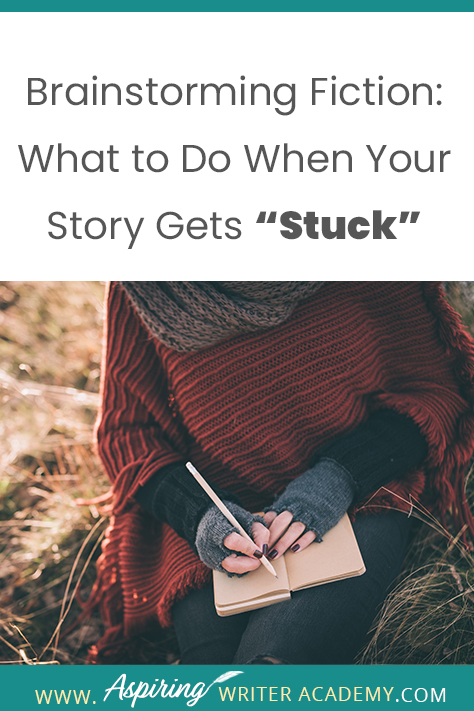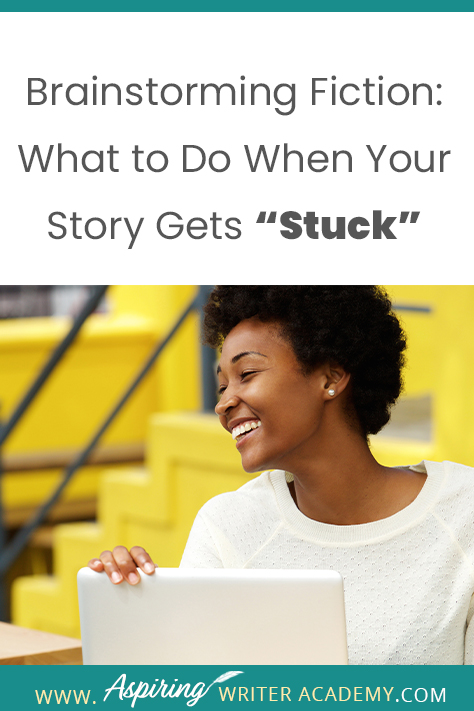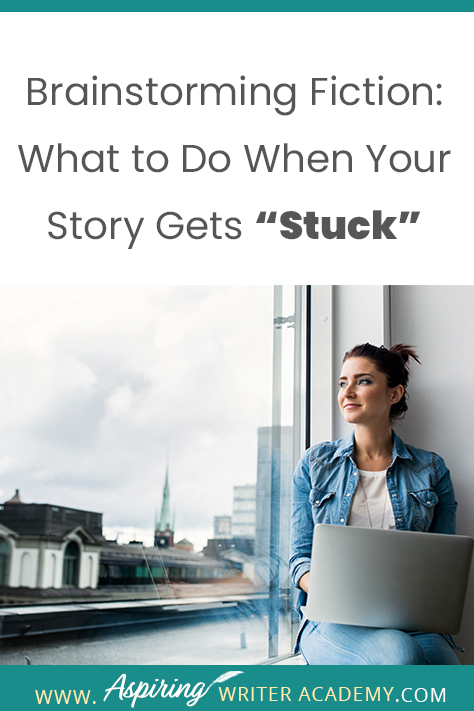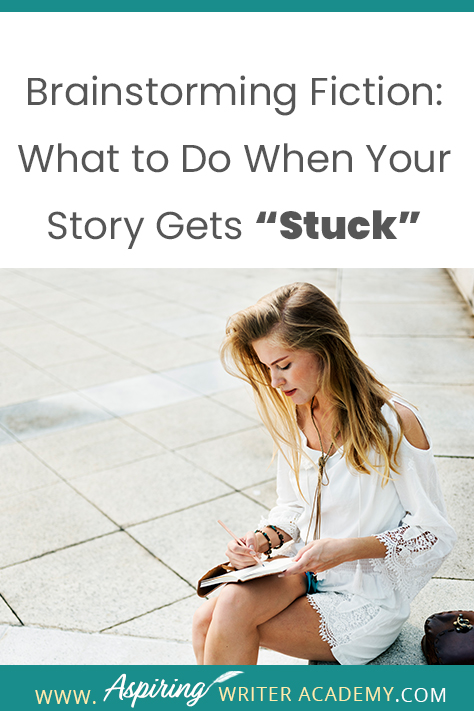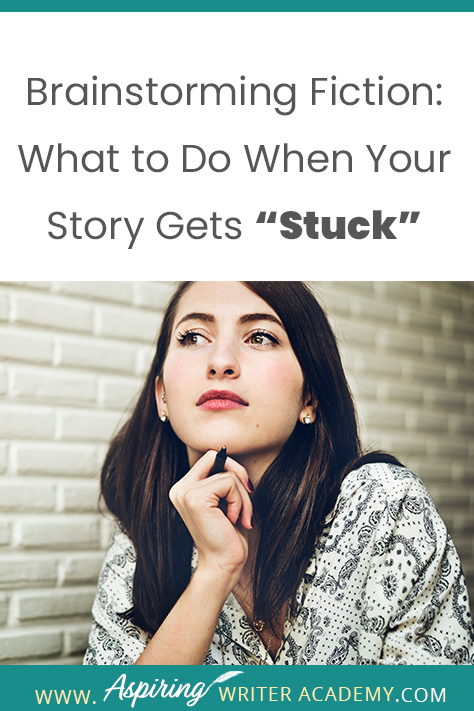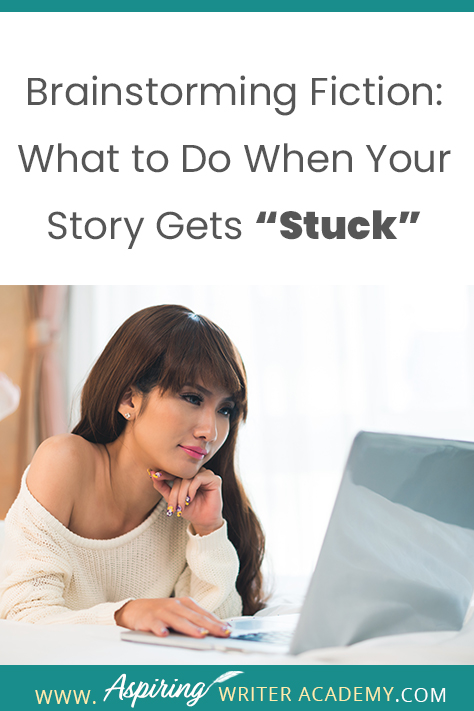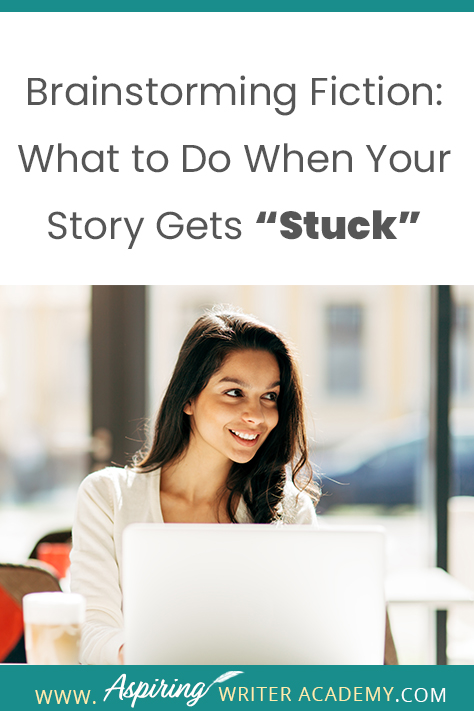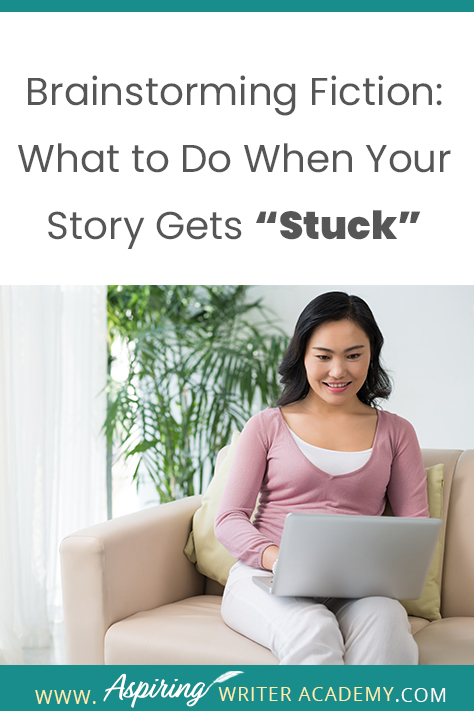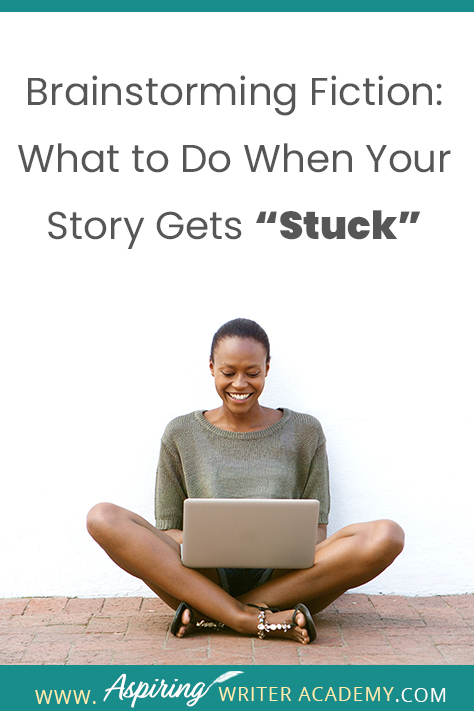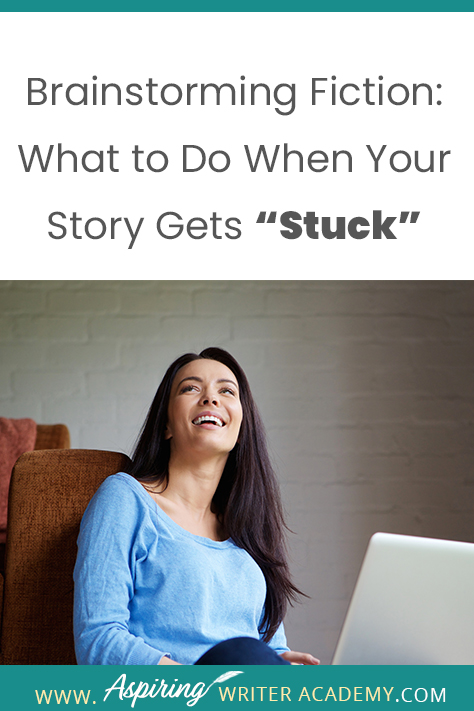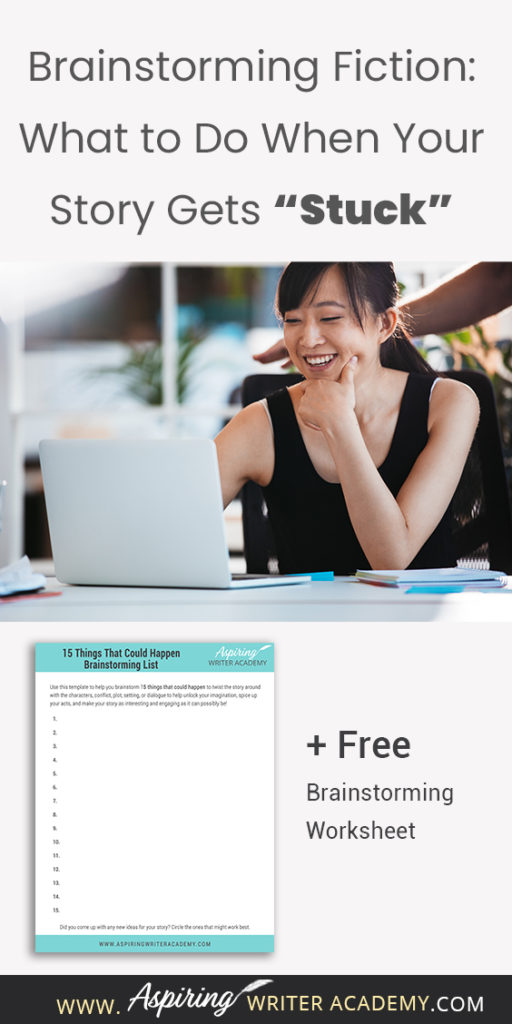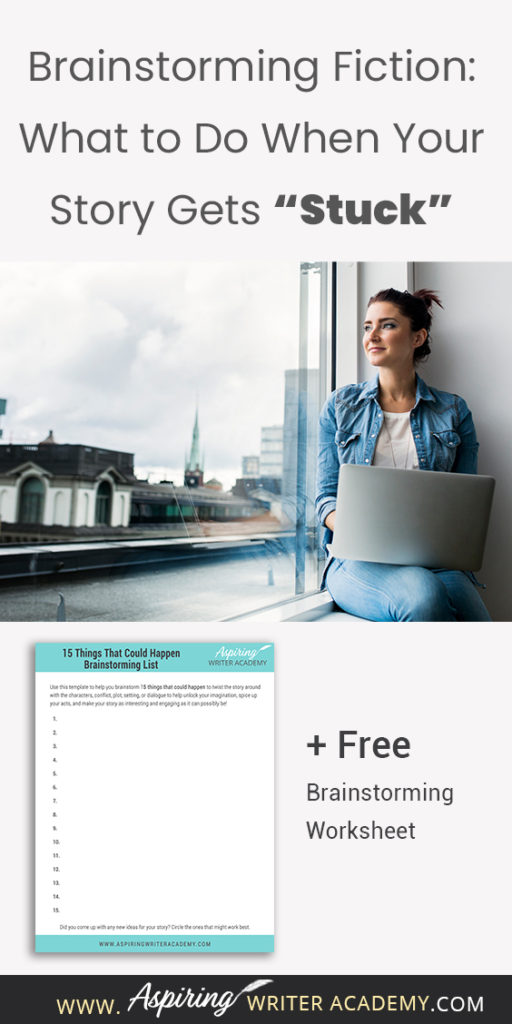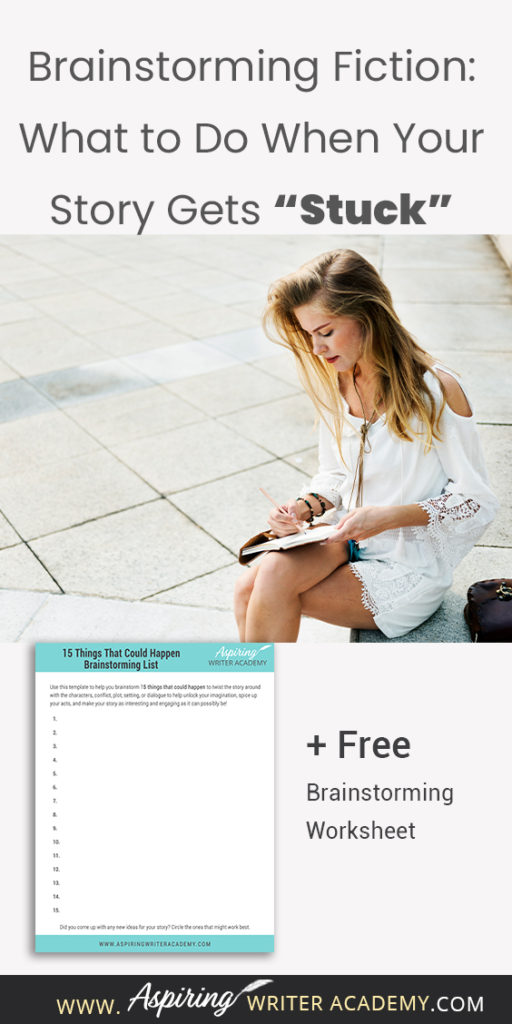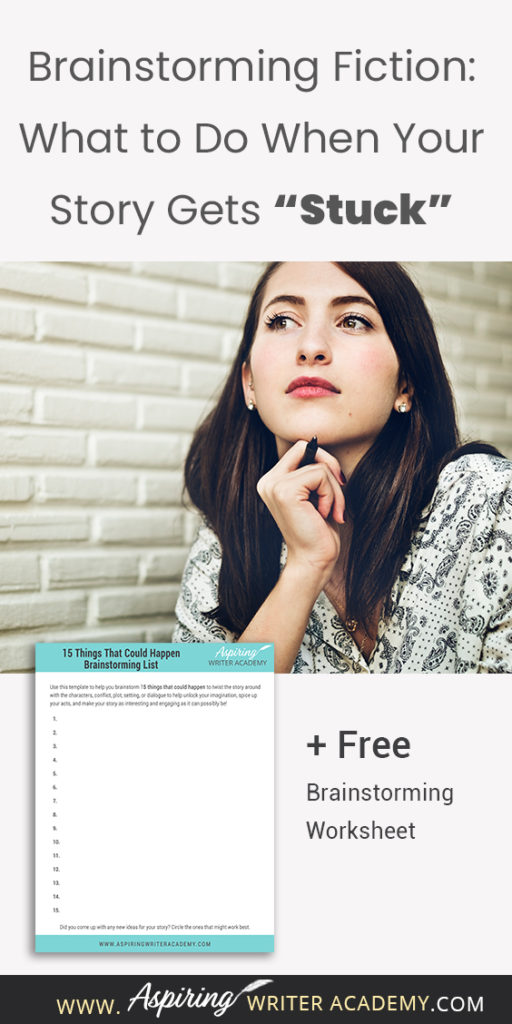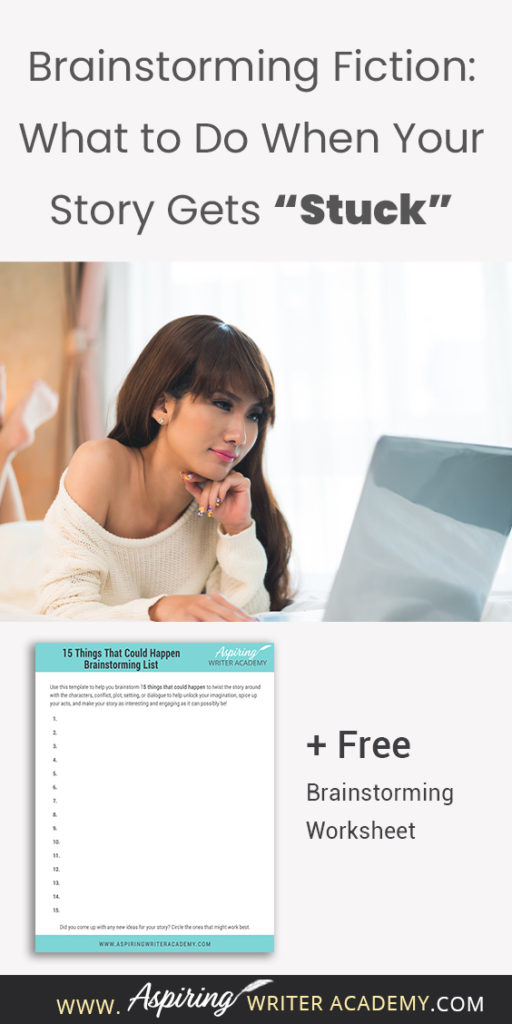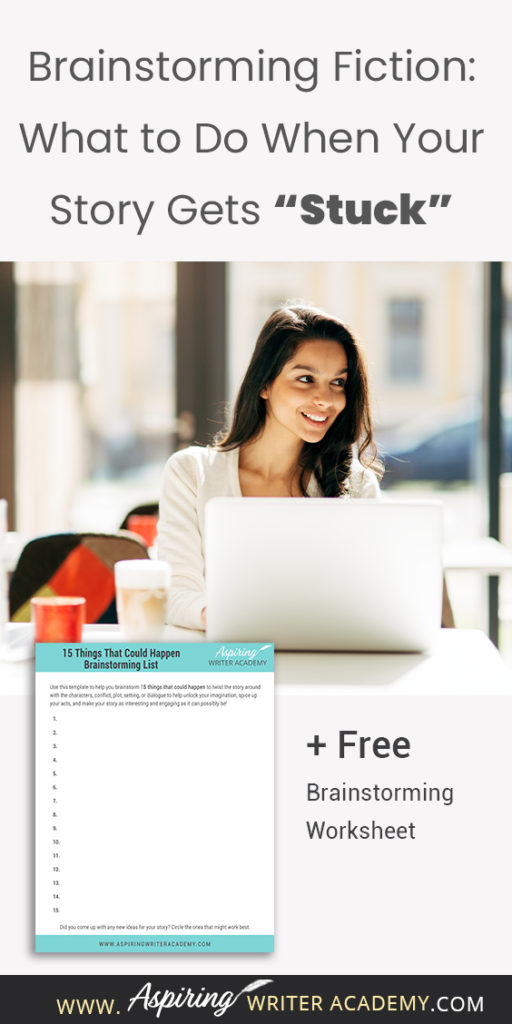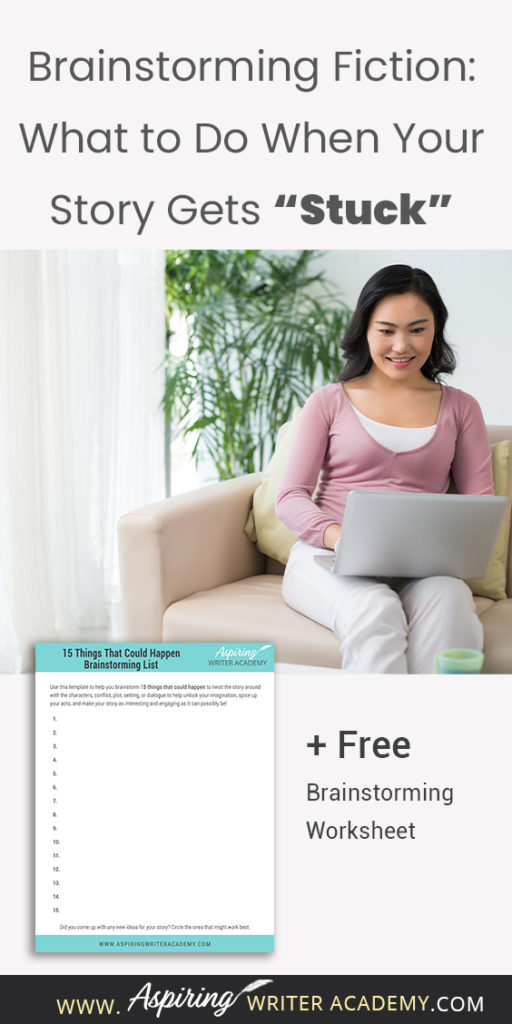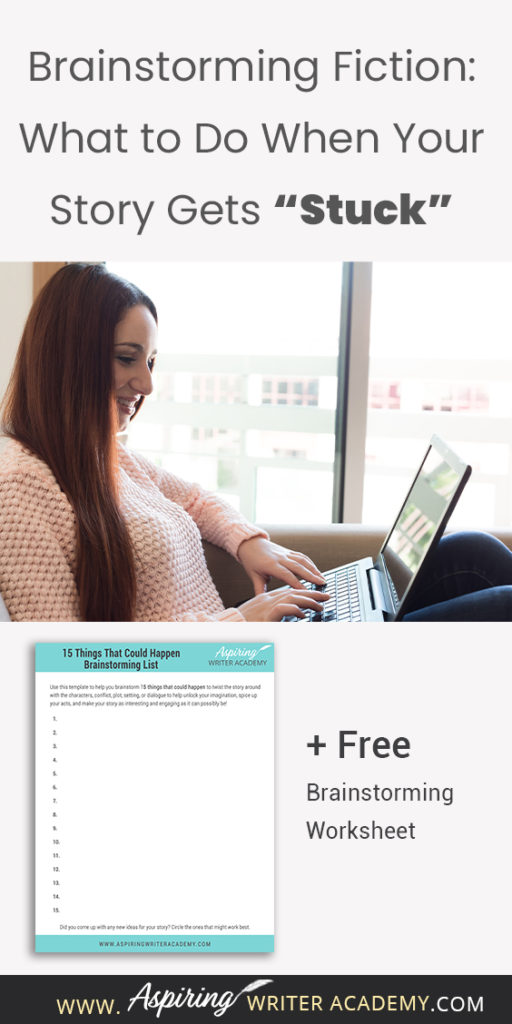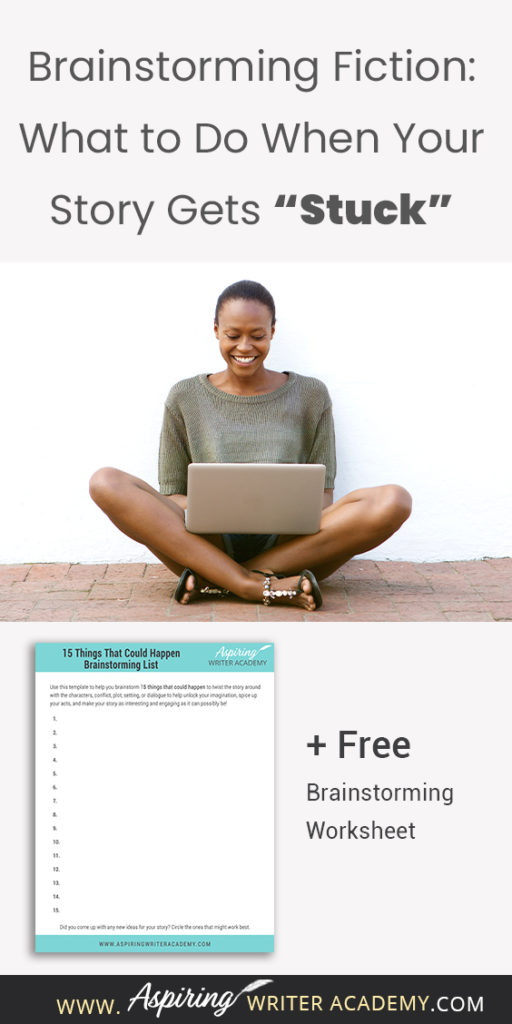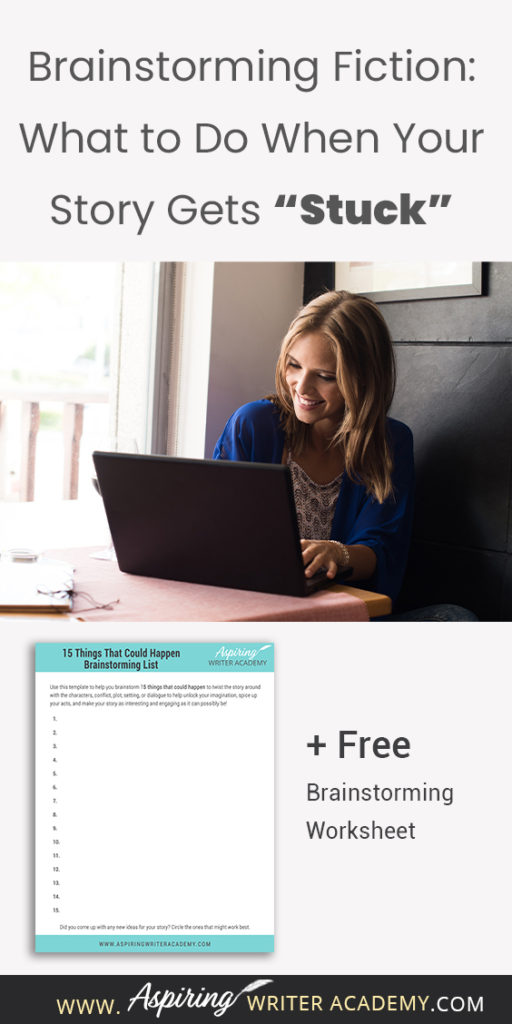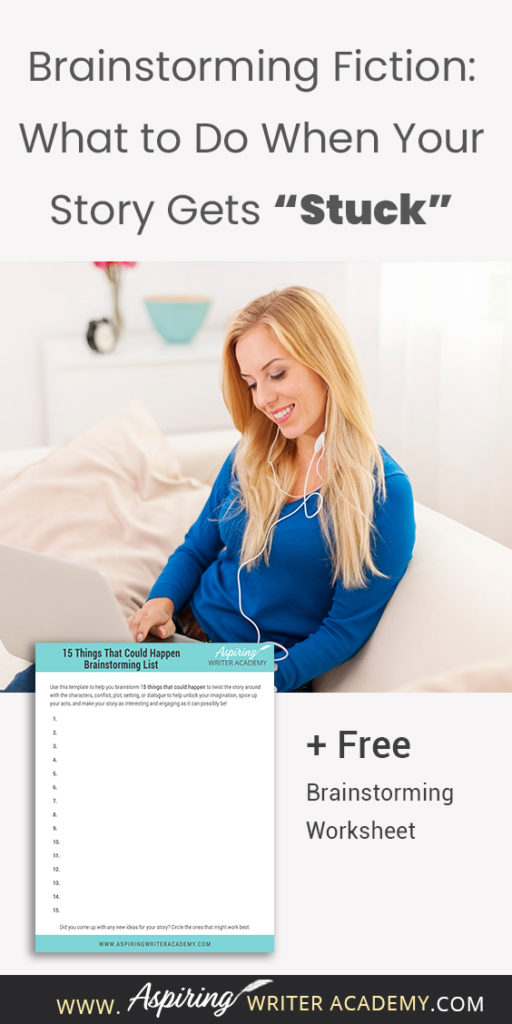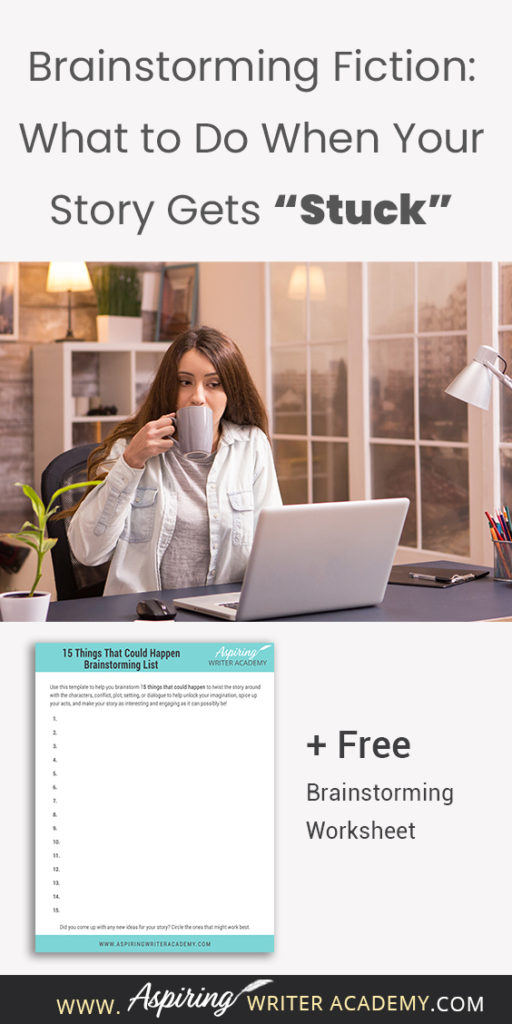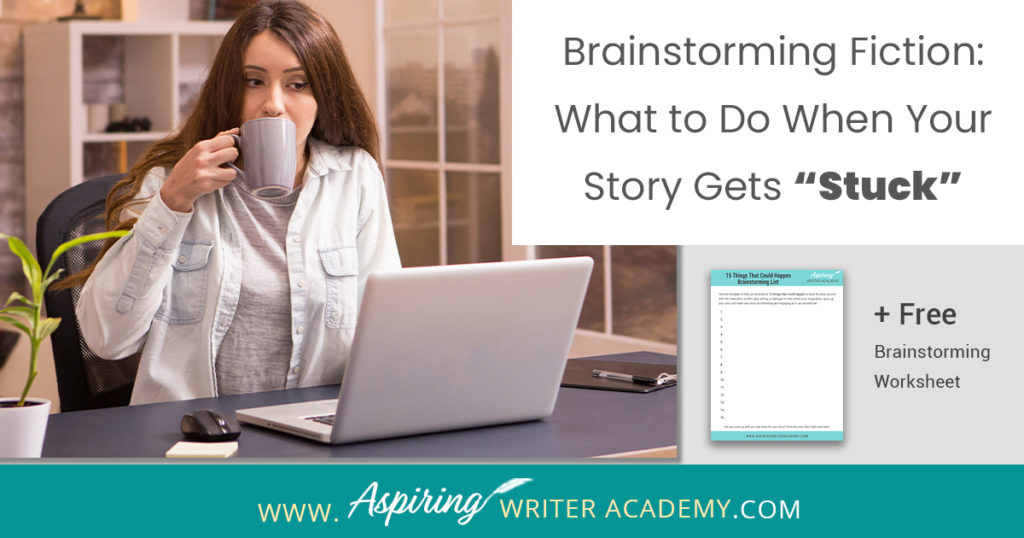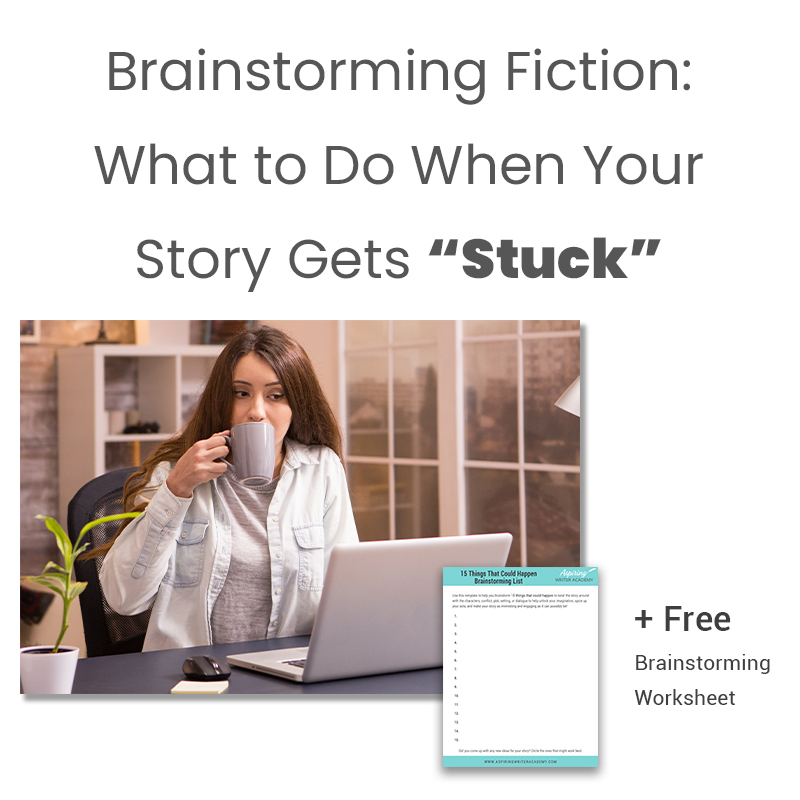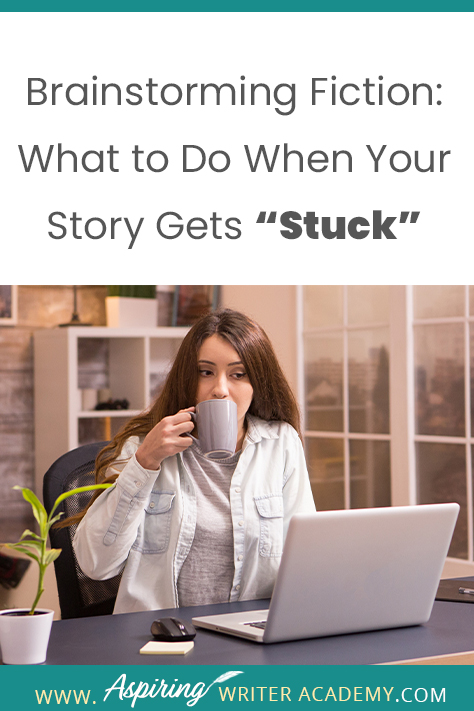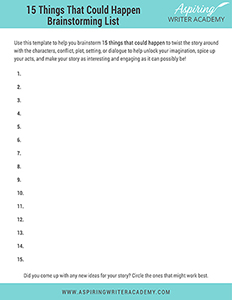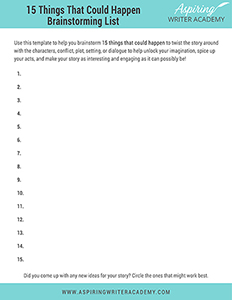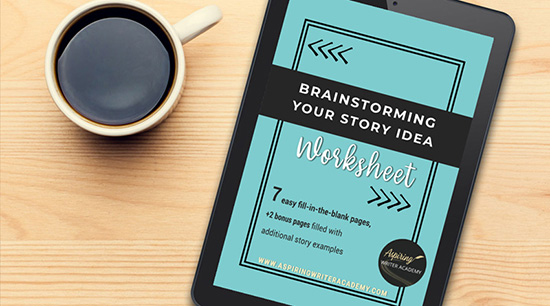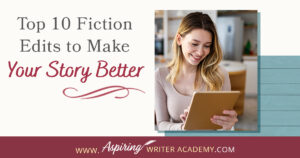Brainstorming Fiction: What to Do When Your Story Gets “Stuck”
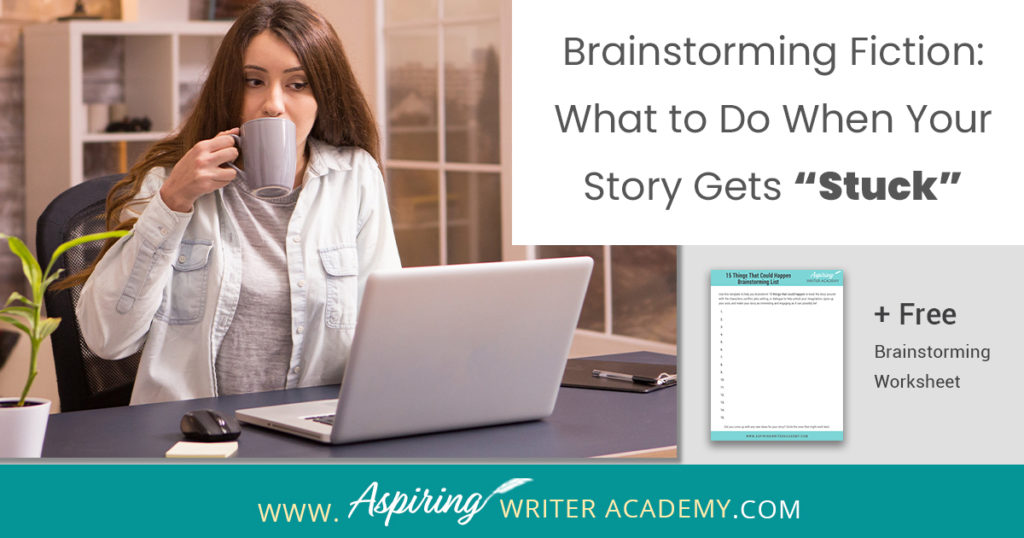
When writing fiction, there may be times when your creativity stalls and you don’t know which way the story should go. Or perhaps the obvious next step forward seems boring.
In our post, Brainstorming Fiction: What to Do When Your Story Gets “Stuck” we give you a tool that can be used for characters, conflict, plot, setting, or dialogue to unlock your imagination, spice up your acts, and make your story as interesting and engaging as it can possibly be!
Download the 15 Things That Could Happen Brainstorming List here.
Whenever you struggle with different aspects of your story, it helps to visualize solutions. For each problem, use our free brainstorming worksheet to list 15 ways the story could go. That’s right, list 15 possible ideas, not one or two or even five, but take the time to really consider all your options.
The first few ideas that you come up with may not be all that interesting. But the more you ponder all the possible things that could happen at this point in your story, the more your brain will relax and become more creative. Don’t be afraid to jot down something silly—ideas, no matter how ridiculous, may lead to other ideas. Now let’s see how creating this list can help with:
1) Characters
2) Plot / Conflict
3) Scene-ending Hooks
4) Settings
5) Dialogue
1) Characters
This brainstorming list may come in handy when you are first creating characters for your story and trying to decide what type of person they should be. List 15 different personality traits the character could possibly have and choose the best ones that will work for your story. (Again, you will not use all 15, just a few.) List 15 strengths this character could have, 15 weaknesses, 15 habits or skills. If you need inspiration, take a day to go to the park or grocery story and watch what real people do.
Use this list to brainstorm 15 different ways your story could open to best show what kind of character your protagonist is and wave some of these tell-tale traits.
What if your character needs to make a decision? List 15 solutions, options, or choices the character might consider, then take the best ideas from the list. Narrow his choice down to two solid directions and have him choose one. He/she can either do (this) or (that).
Sometimes an author is so busy writing that they do not take the time to slow down and think about whether there is a better path for this character to take.
2) Plot / Conflict
When brainstorming the story, list 15 things that could happen during the first, second, and third acts. List 15 things that could happen in each chapter and each scene.
After the protagonist sets a goal to overcome the opposition, what are 15 steps the character could take to try to achieve that goal? What are 15 steps the opposition could take to oppose the main character and cause more conflict? What are 15 ways you could make the Climax at the end of the story more exciting?
Select the best ideas from your brainstorming list and toss the others out. Draft your list quickly. Do not get selective until your list is complete, then go back and consider which ideas may work for your story.
If you find you have written yourself into a corner and you do not know how to get your character out of a ‘hole’ or get your story back on the right path, you may have to retrace your steps to a place in the story that appears more solid and then use the list to brainstorm from there. Was there a better direction your story could have gone before it got ‘off track?’
3) Scene-ending Hooks
The protagonist of your story should enter a scene with intention, a goal they hope to achieve within this scene. (Scene goal.) The character should then encounter conflict from the opposition and at the end of scene, the character has either achieved his scene goal or not.
At this point, the character needs to make a choice on what to do next. These scene-ending choices, decisions the character must make, are often climatic ‘hooks’ that grab the reader with intrigue and make them keep reading pages to find out what happens next.
If your story fizzles, becomes dull, or seems to be going in circles or nowhere at all, it is because the character did not have two strong choices (story directions) to choose from at the end of one of his scenes. He did not make a strong action-oriented decision from these two choices that served to move the story forward.
List 15 ideas that could replace the dull or wayward scene that took the story off on a weird tangent.
4) Settings
Use this list to brainstorm 15 things that could possibly happen in a setting like this. What items most represent your ‘story world?’ What are 15 items your main character would have in their house or car? What are 15 items in this scene that could affect the plot?
In an action scene or perhaps at the climax, what are 15 possible things your character may need? What are 15 things that may help or hinder his ability to defeat the opposition? Is there a trap? Is there an object laying around that may get in the way? Is there a candlestick the character can use as a weapon or a door handle they can grab onto for support?
Does the temperature, weather, or lighting have any impact on the character or situation?
5) Dialogue
The free worksheet is especially helpful when brainstorming possible comebacks or ‘zingers’ when one character needs to respond to another. Dialogue is always a 1-2 punch. One character says something or asks a question (stimulus) to which the other character must respond (response).
What are 15 possible things this character could say in response to the line of dialogue he was just presented with? Will he be sarcastic, hurt, thankful, or resentful? Will he be able to speak at all or be too shocked for a moment to respond? What will he finally say when he can respond?
In romance, what flirtatious line could one character toss to the other? How will the receiving character flirt back?
How can the characters fight with their words, inflict pain, argue with one another?
Don’t use the first idea that pops into your head. Instead list 15 different options and go with the best one. You may be very glad you did! It is usually the ideas listed further down on the page, the ones written once your imagination is unlocked, that become the best choices for your story.
Download the 15 Things That Could Happen Brainstorming List here.
We hope that you have enjoyed Fiction Writing: Free Brainstorming Worksheet to Keep Your Story from Getting “Stuck” and that you can use the 15 Things That Could Happen Brainstorming List when writing again and again.
You can also download our free Brainstorming Your Story Idea Worksheet with fill-in-the-blank templates to help you further develop your characters and deepen your story.
Do you find it difficult to create compelling antagonists and villains for your stories? Do your villains feel cartoonish and unbelievable? Do they lack motivation or a specific game plan? Discover the secrets to crafting villains that will stick with your readers long after they finish your story, with our How to Create Antagonists & Villains Workbook.
This 32-page instructional workbook is packed with valuable fill-in-the-blank templates and practical advice to help you create memorable and effective antagonists and villains. Whether you're a seasoned writer or just starting out, this workbook will take your writing to the next level.
If you have any questions or would like to leave a comment below, we would love to hear from you!
Our Goal for Aspiring Writer Academy is to help people learn how to write quality fiction, teach them to publish and promote their work, and to give them the necessary tools to pursue a writing career.

ENTER YOUR EMAIL BELOW
TO GET YOUR FREE
"Brainstorming Your Story Idea Worksheet"
7 easy fill-in-the-blank pages,
+ 2 bonus pages filled with additional story examples.
A valuable tool to develop story plots again and again.
Other Blog Posts You May Like
Learn to Plot Fiction Writing Series: Story Analysis of “Beauty and the Beast”
How to Plot Your Fictional Novel (with Free Template Included)
The Ultimate Book Signing Checklist: What to Bring to Your First Book Signing
5 Questions to Create Believable Villains
Why Your Characters Need Story-Worthy Goals
3 Levels of Goal Setting for Fiction Writers
Fiction Writing: How to Write a Back Cover Blurb that Sells
Fiction Writing: How to Name Your Cast of Characters
How to Captivate Your Readers with Scene-Ending Hooks
Scene & Sequel: The Secret to Plotting an Epic Novel
Scene & Sequel: The Secret to Plotting an Epic Novel (Part 2)
Writing Fiction: How to Develop Your Story Premise
12 Quick Tips to Write Dazzling Dialogue
10 Questions to Ask When Creating Characters for Your Story
Macro Edits: Looking at Your Story as a Whole
Basic Story Structure: How to Plot in 6 Steps

is a multi-published author, speaker, and writing coach. She writes sweet contemporary, inspirational, and historical romance and loves teaching aspiring writers how to write quality fiction. Read her inspiring story of how she published her first book and launched a successful writing career.

